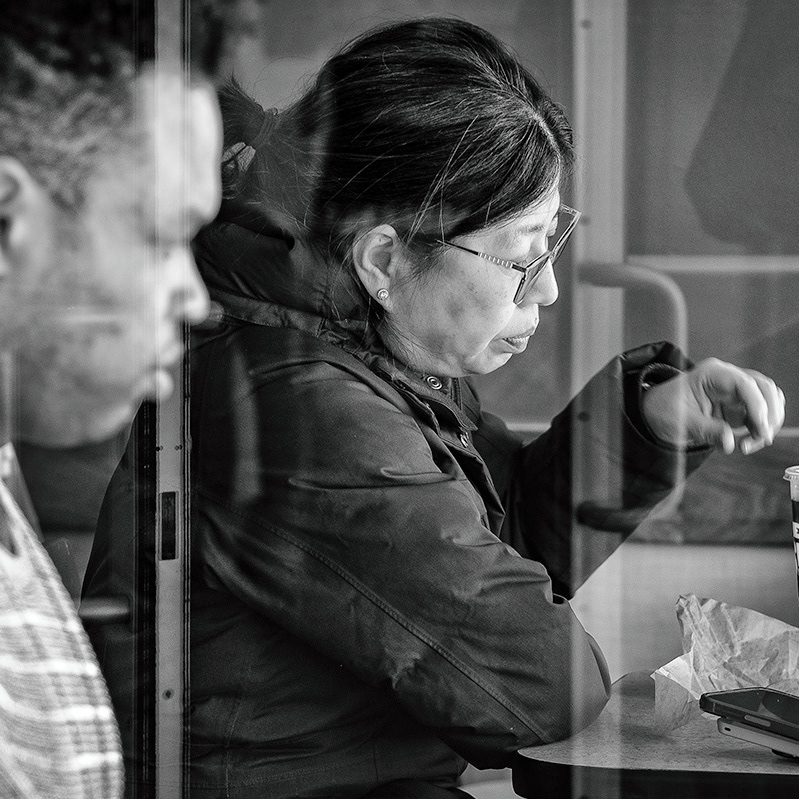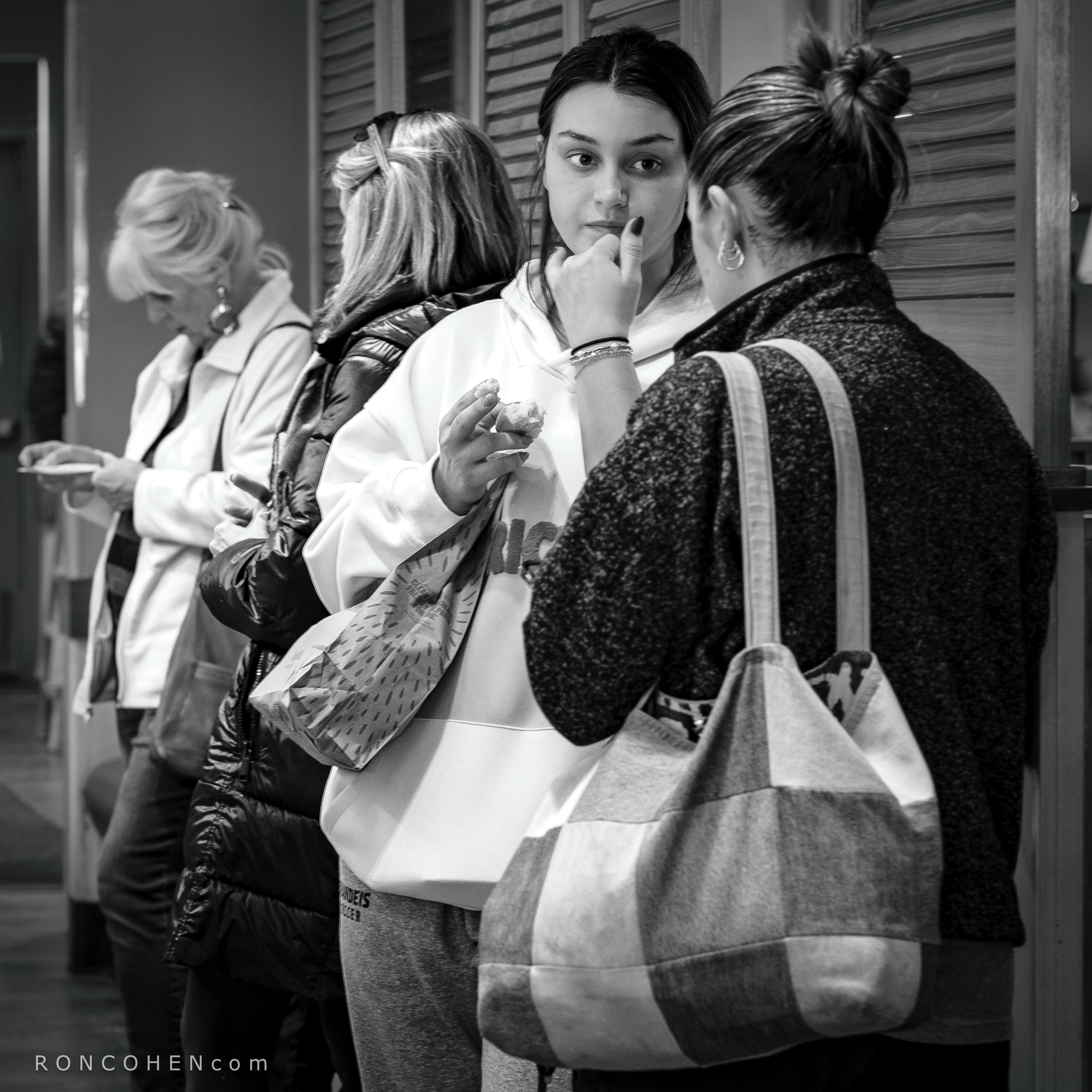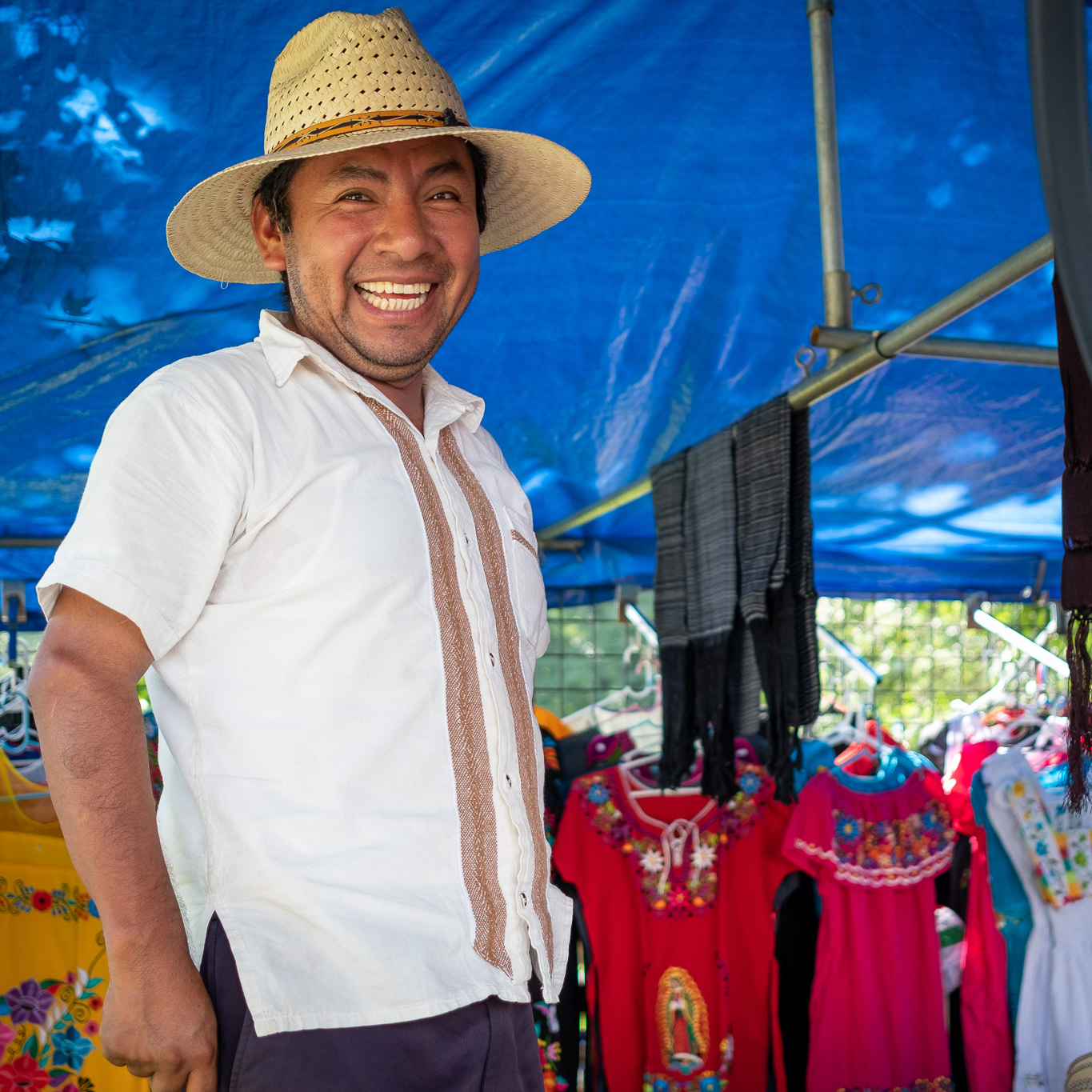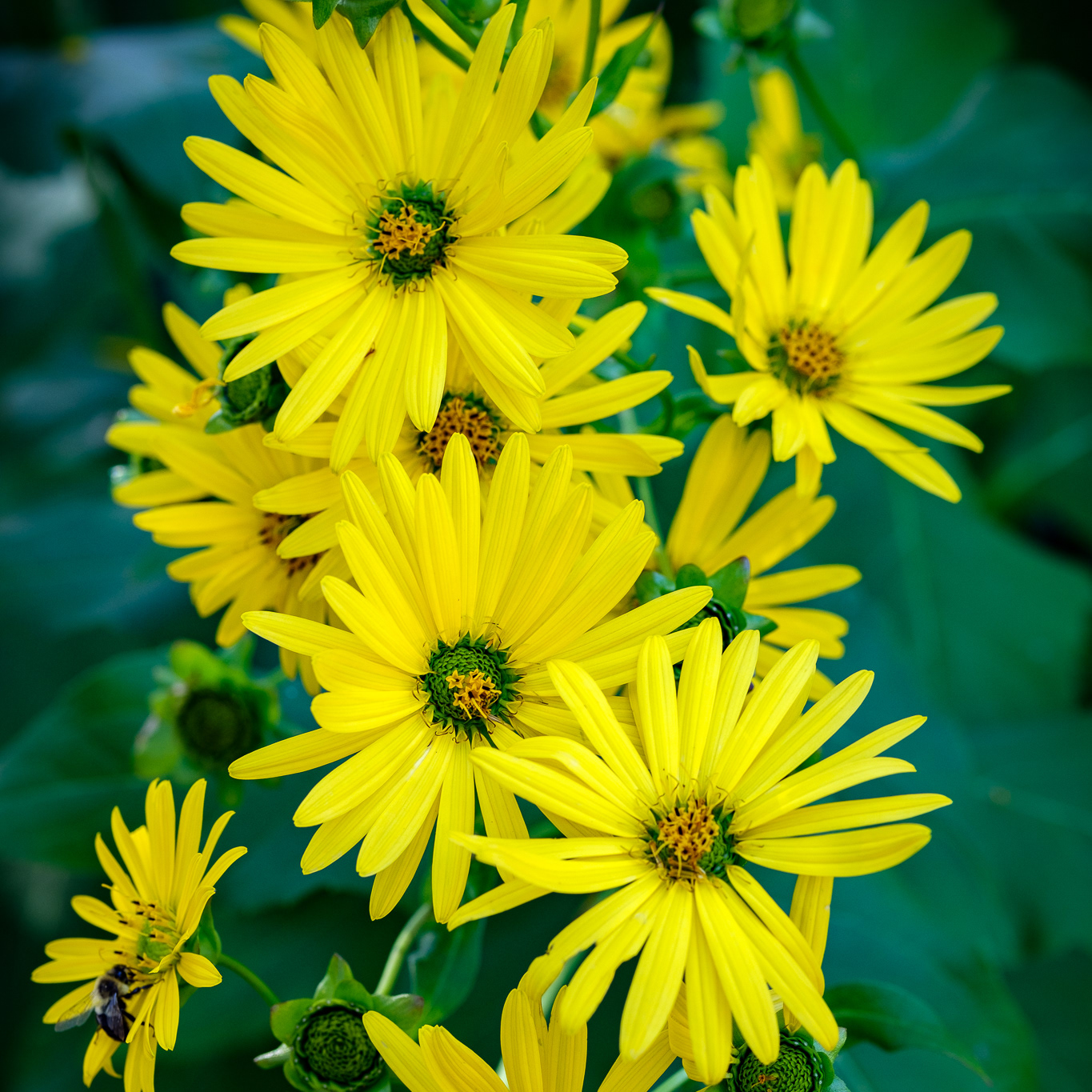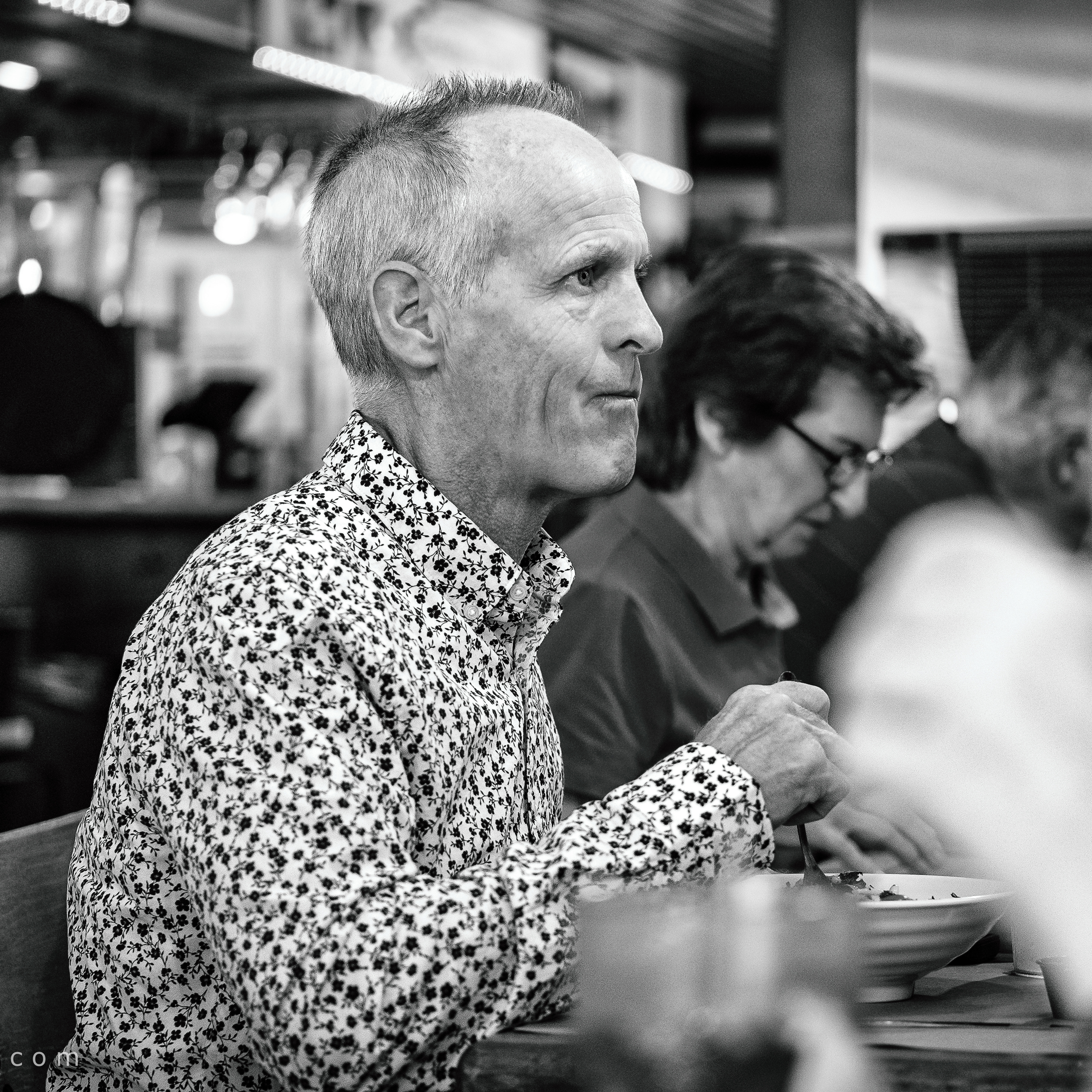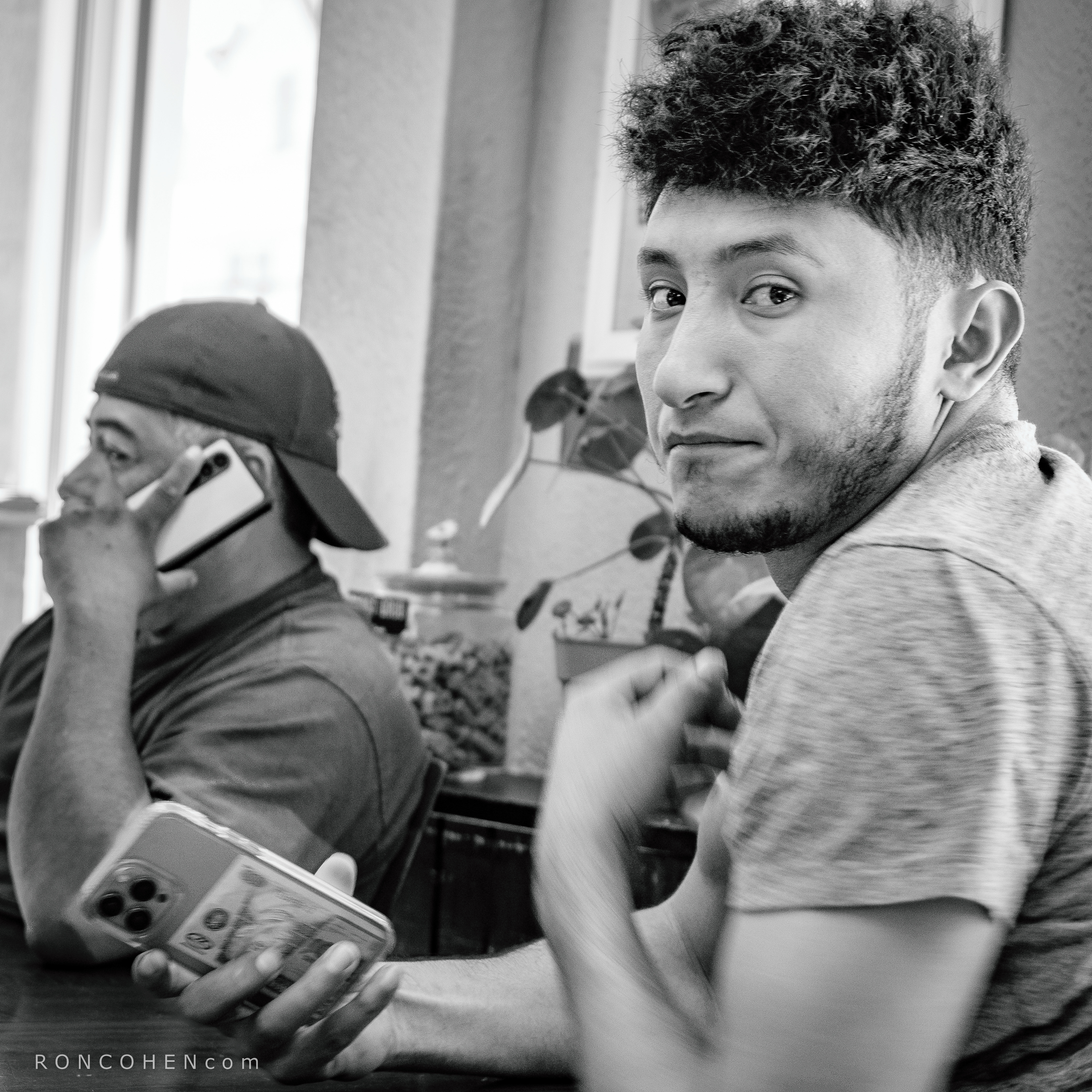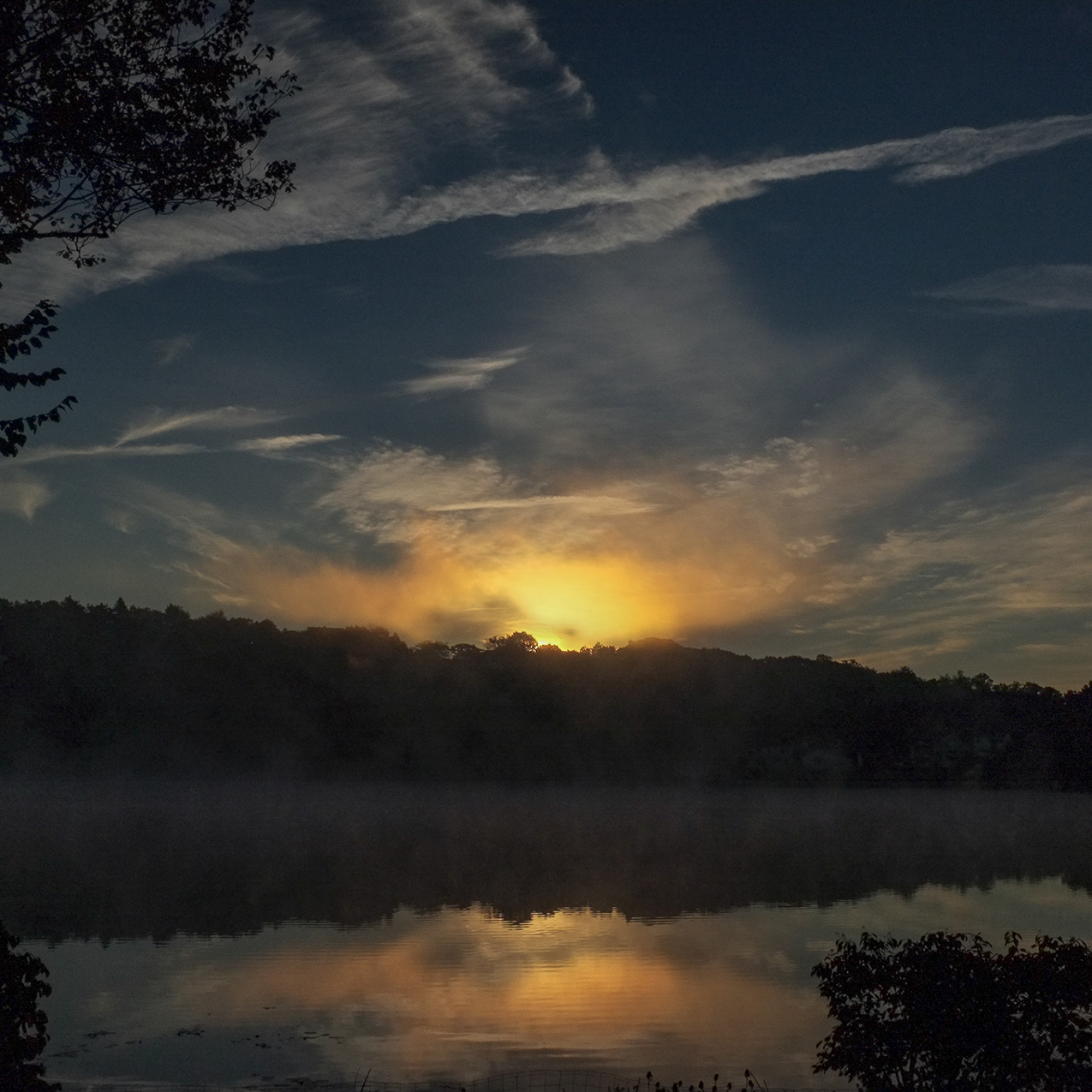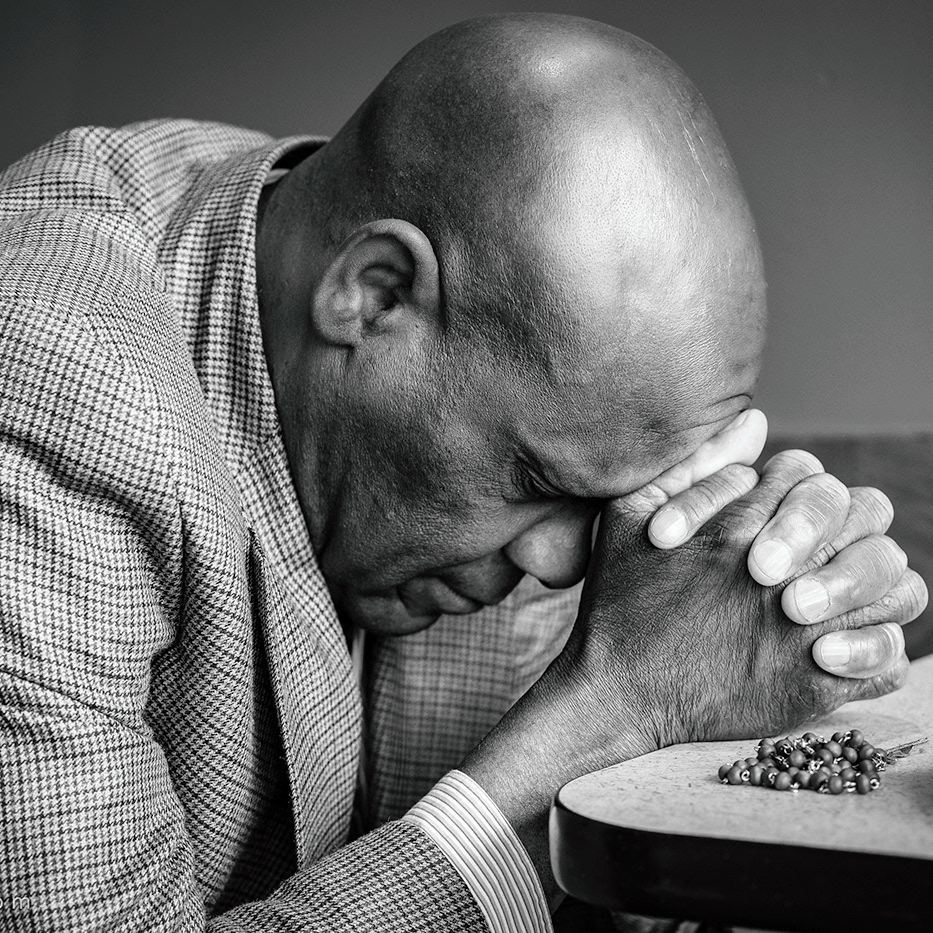
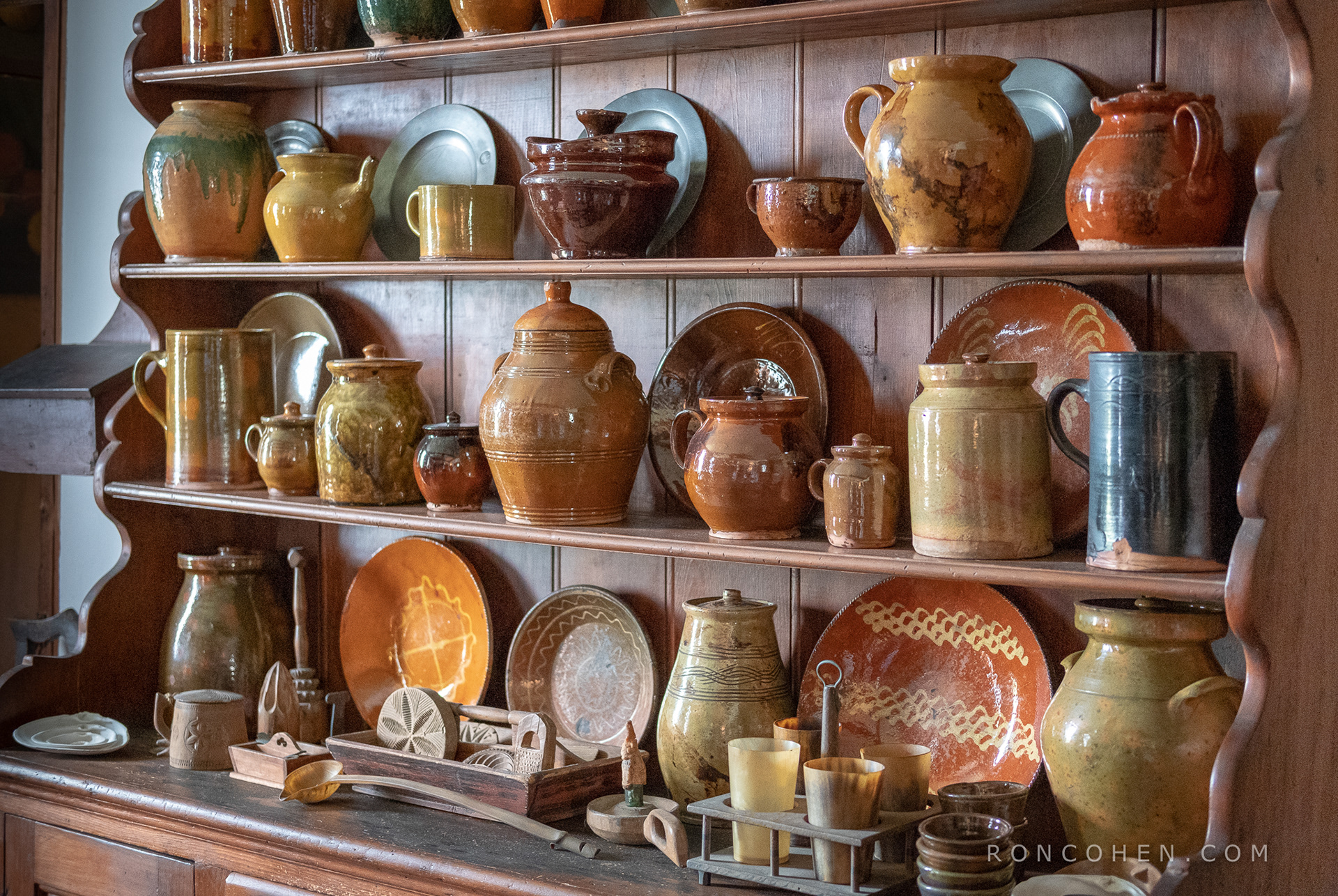

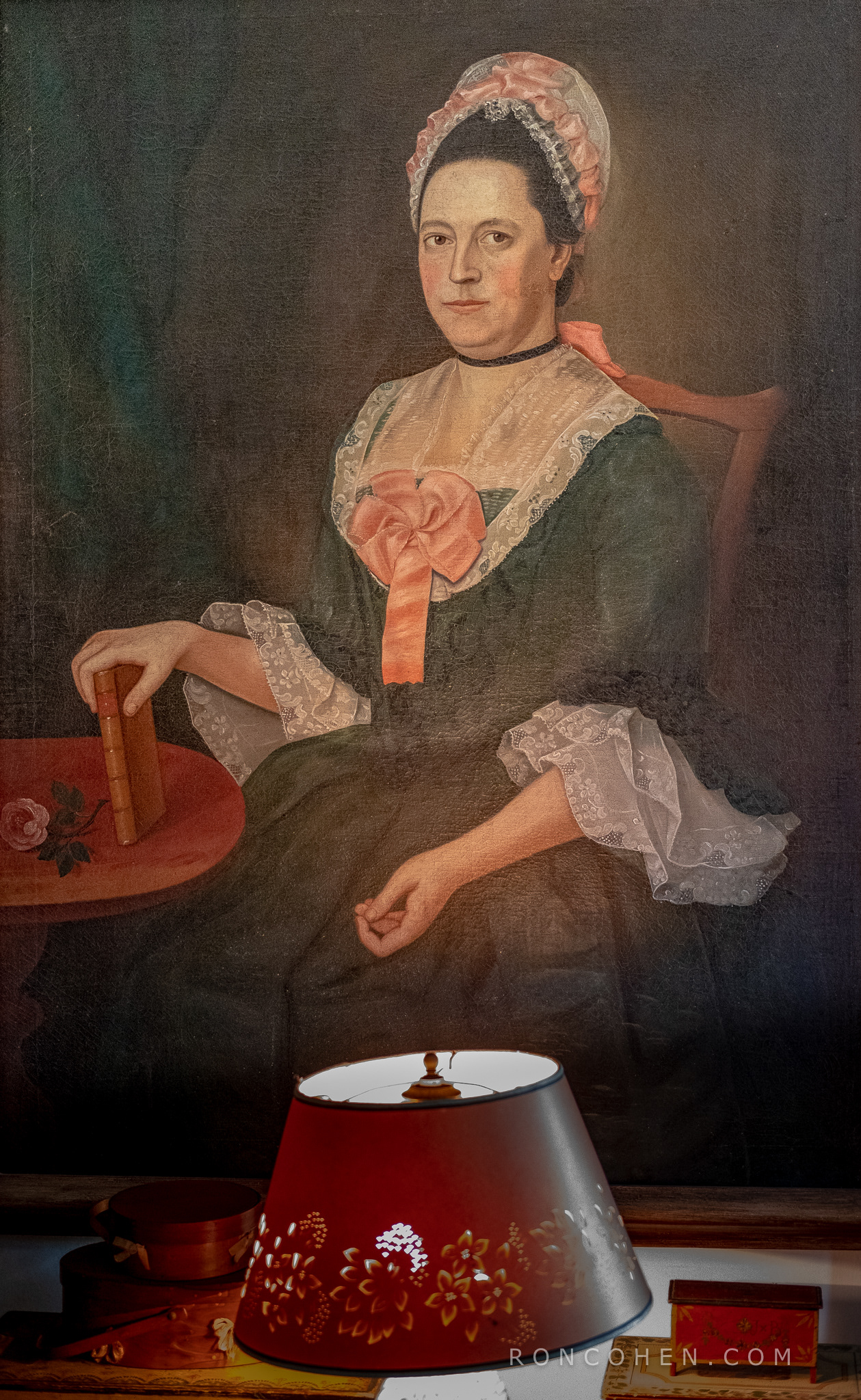

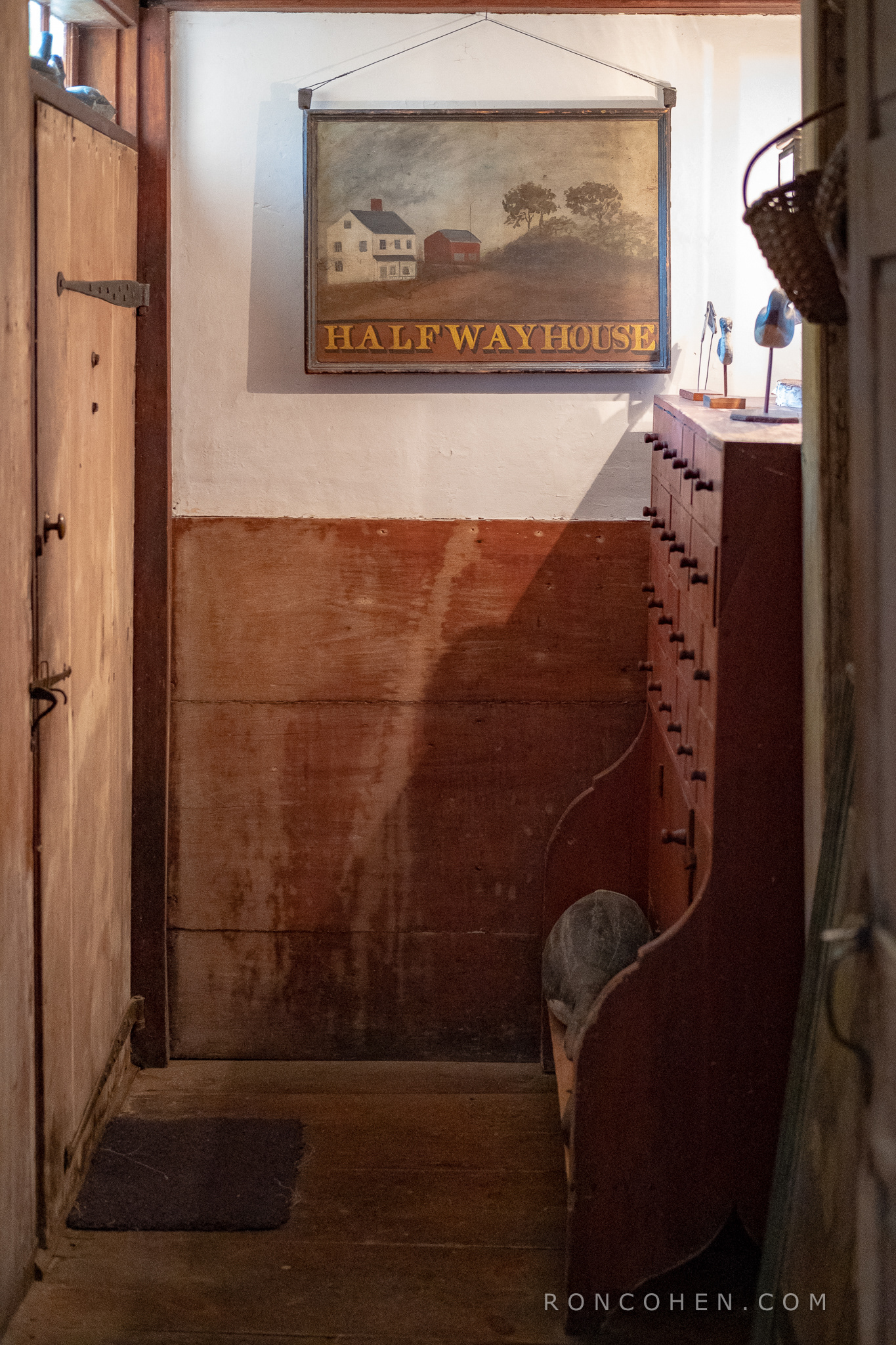

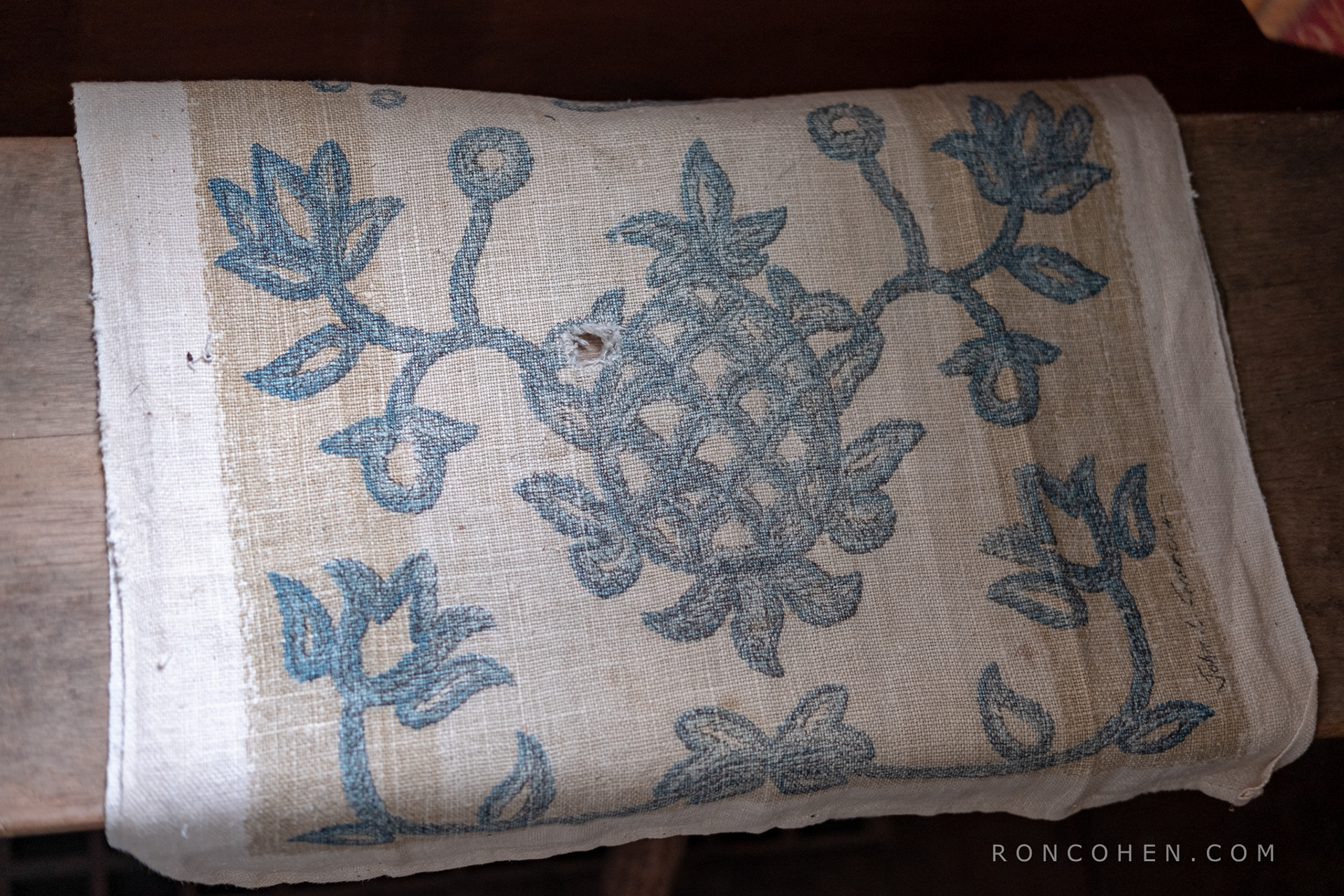

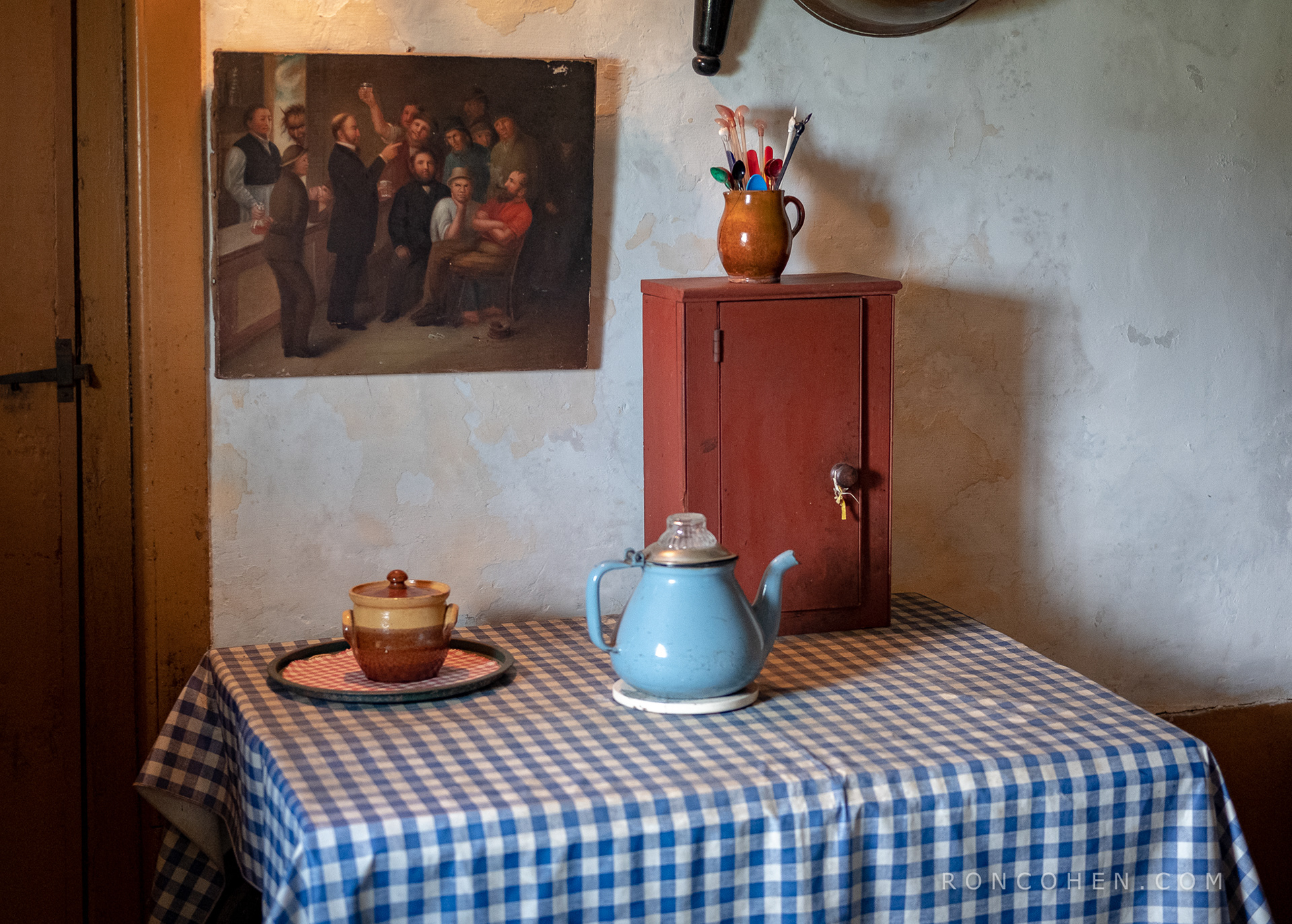

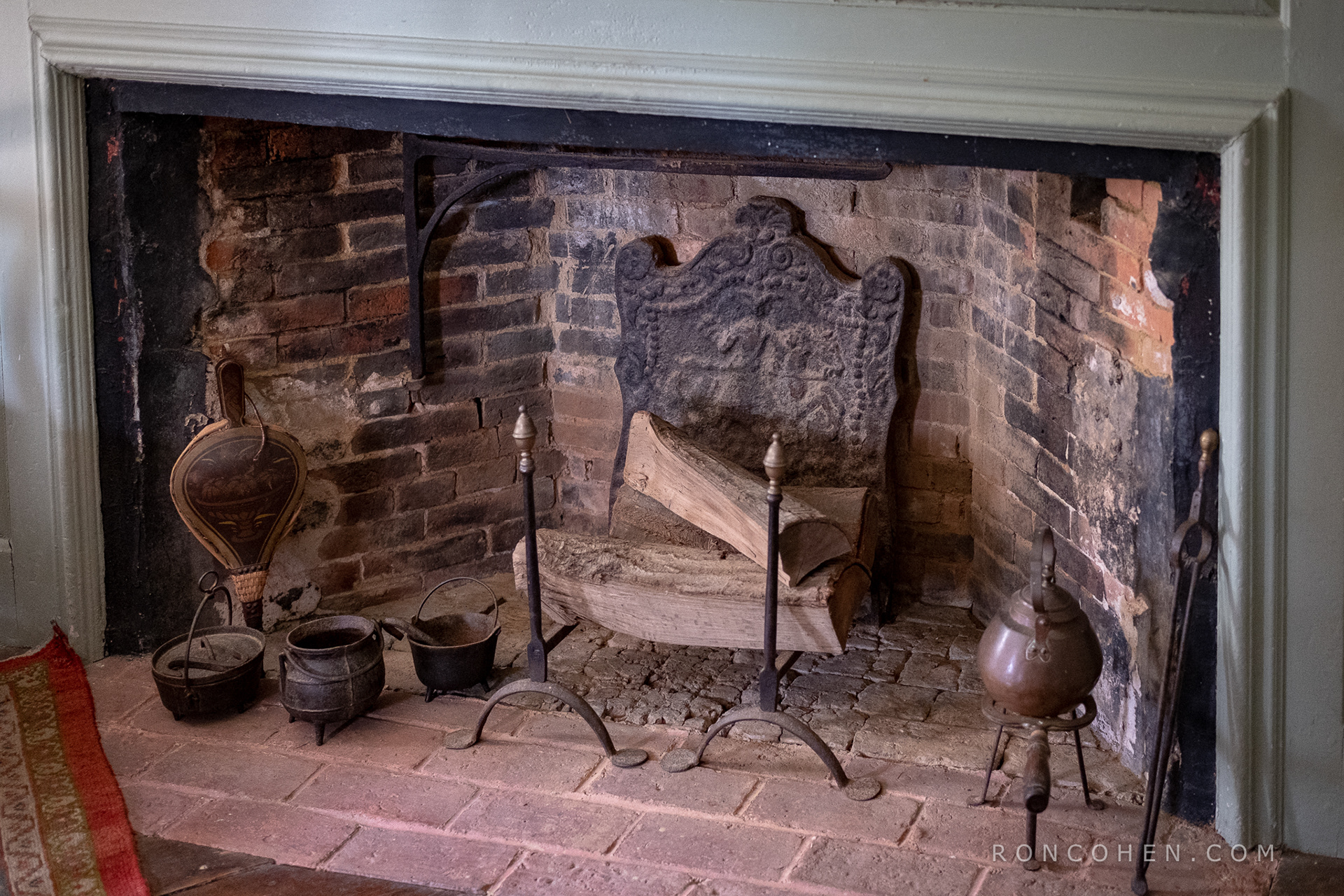
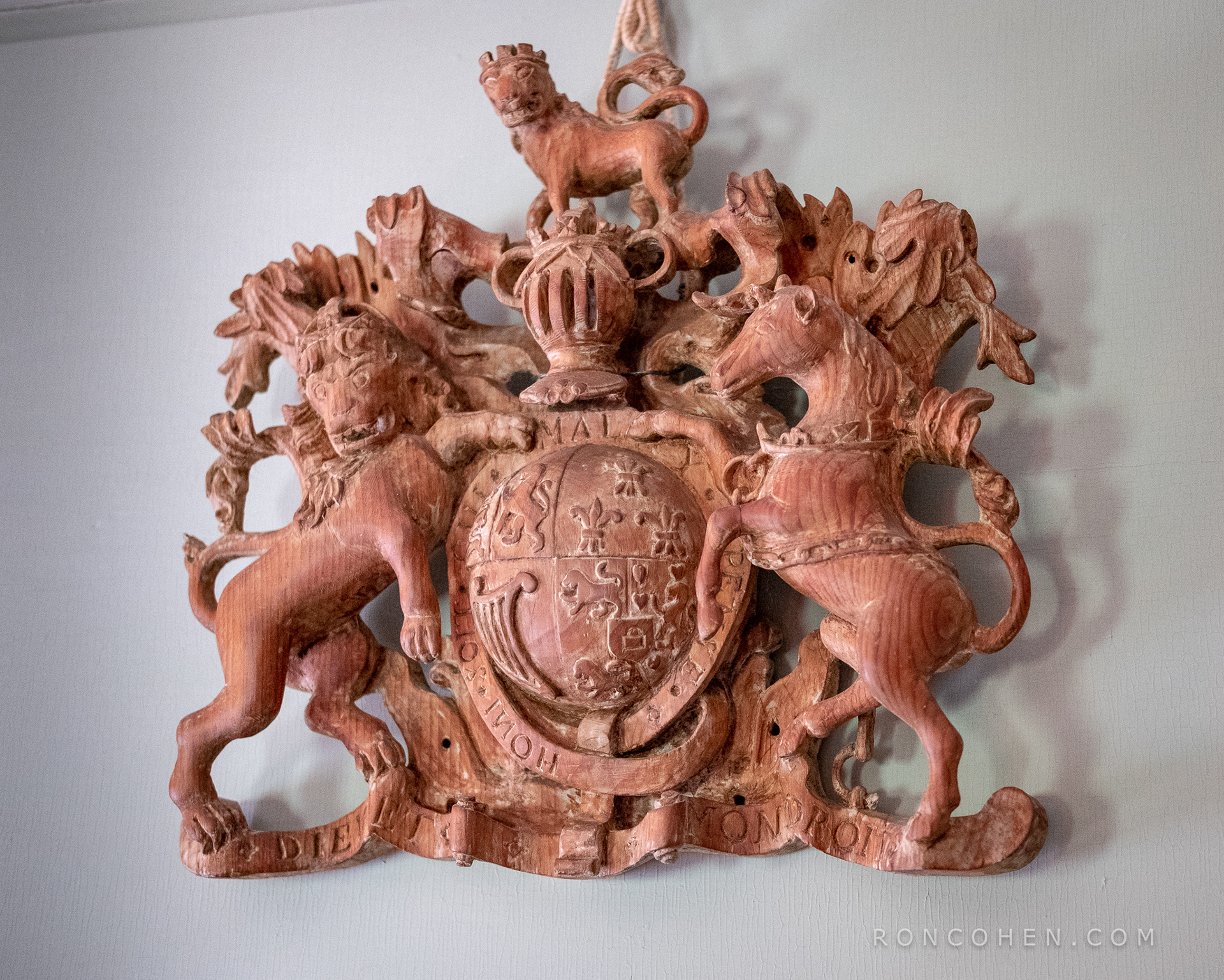
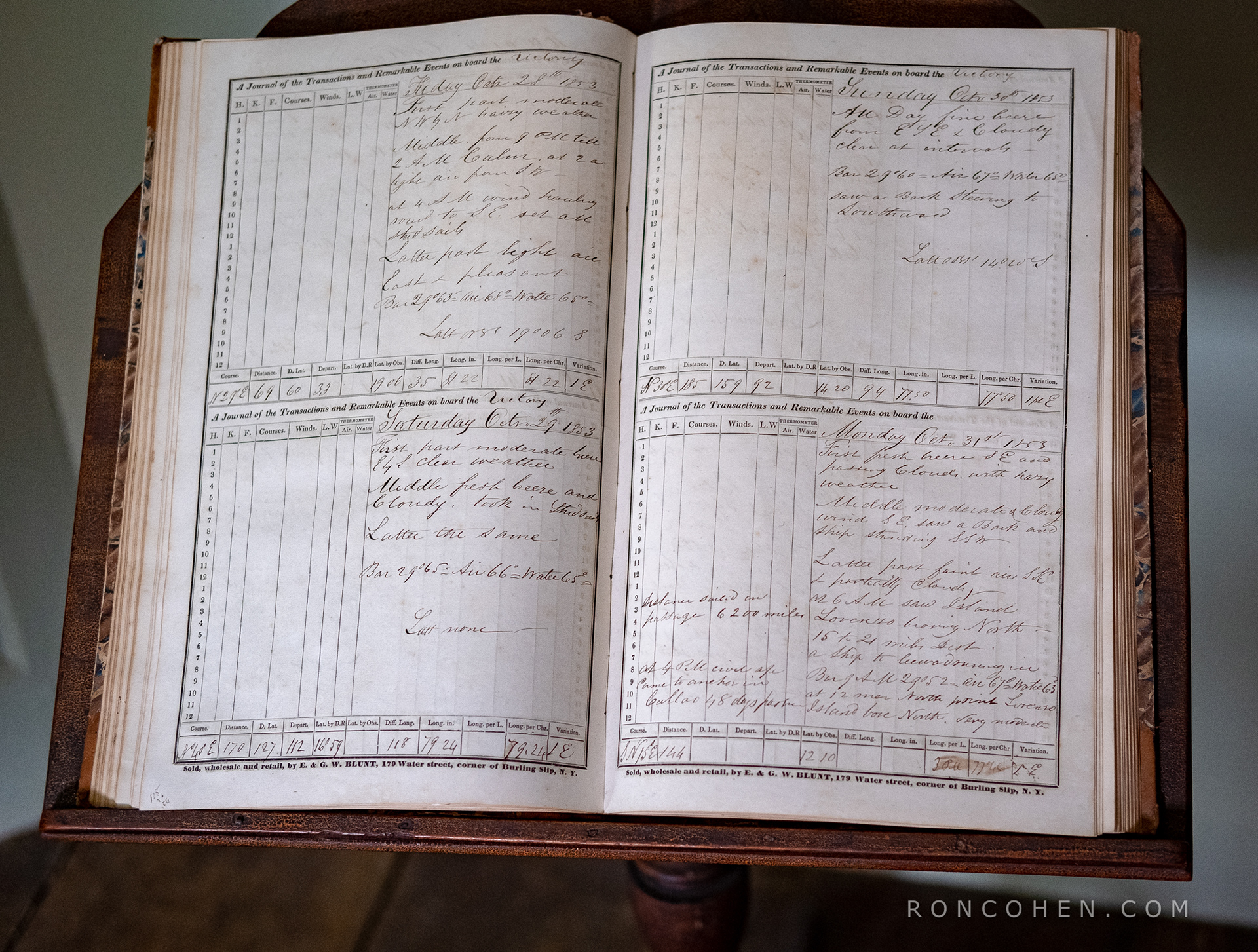
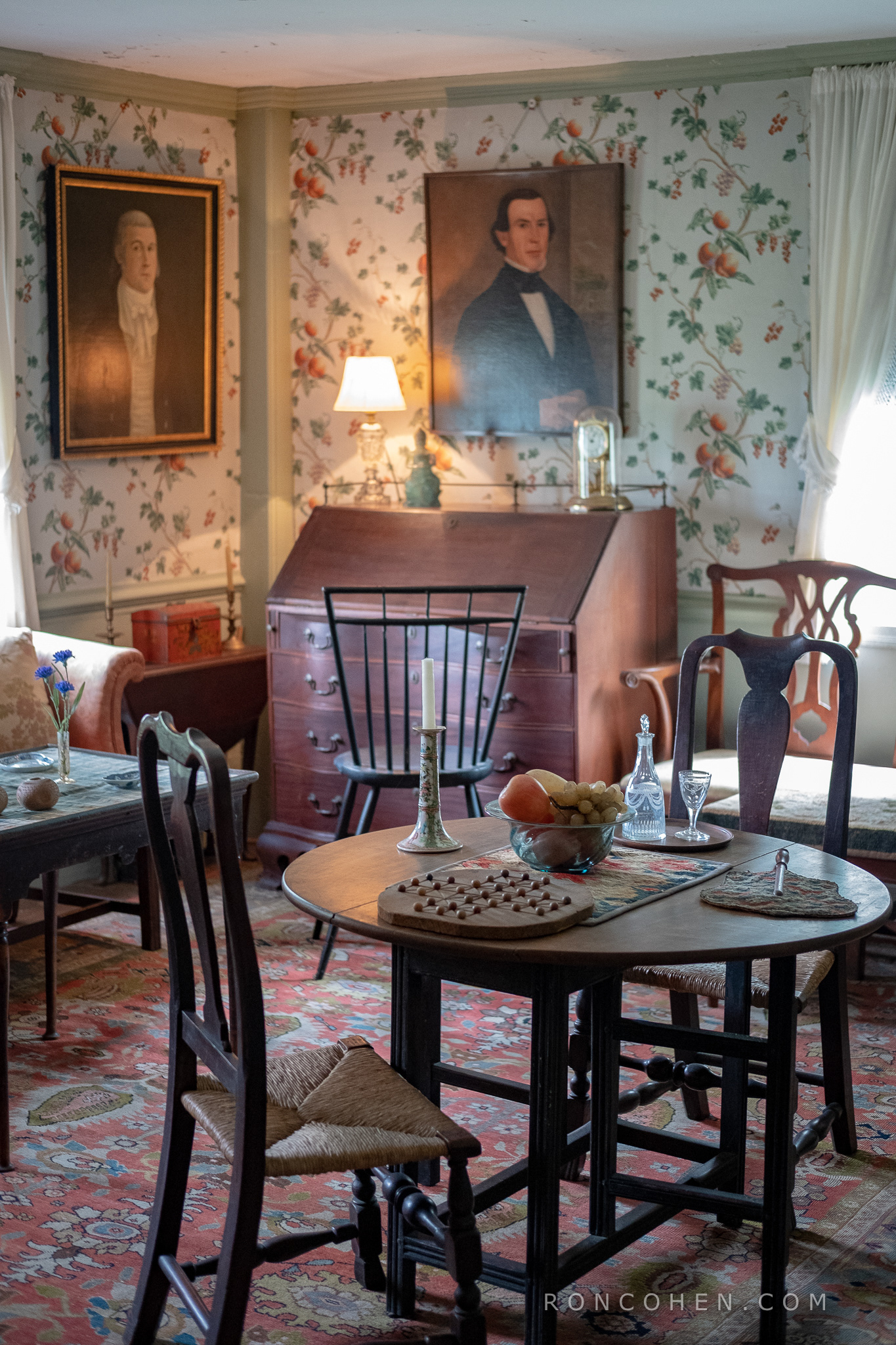
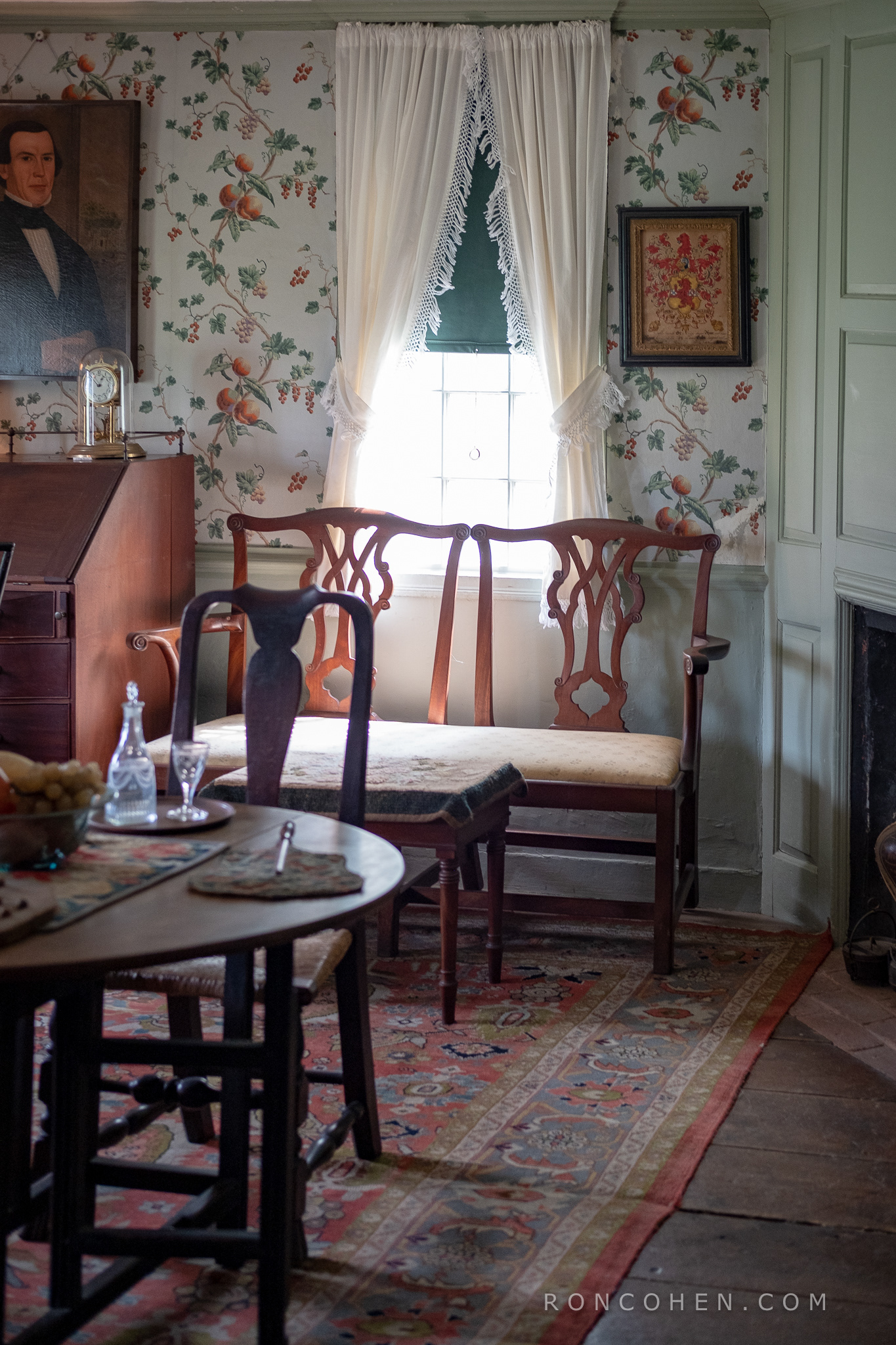
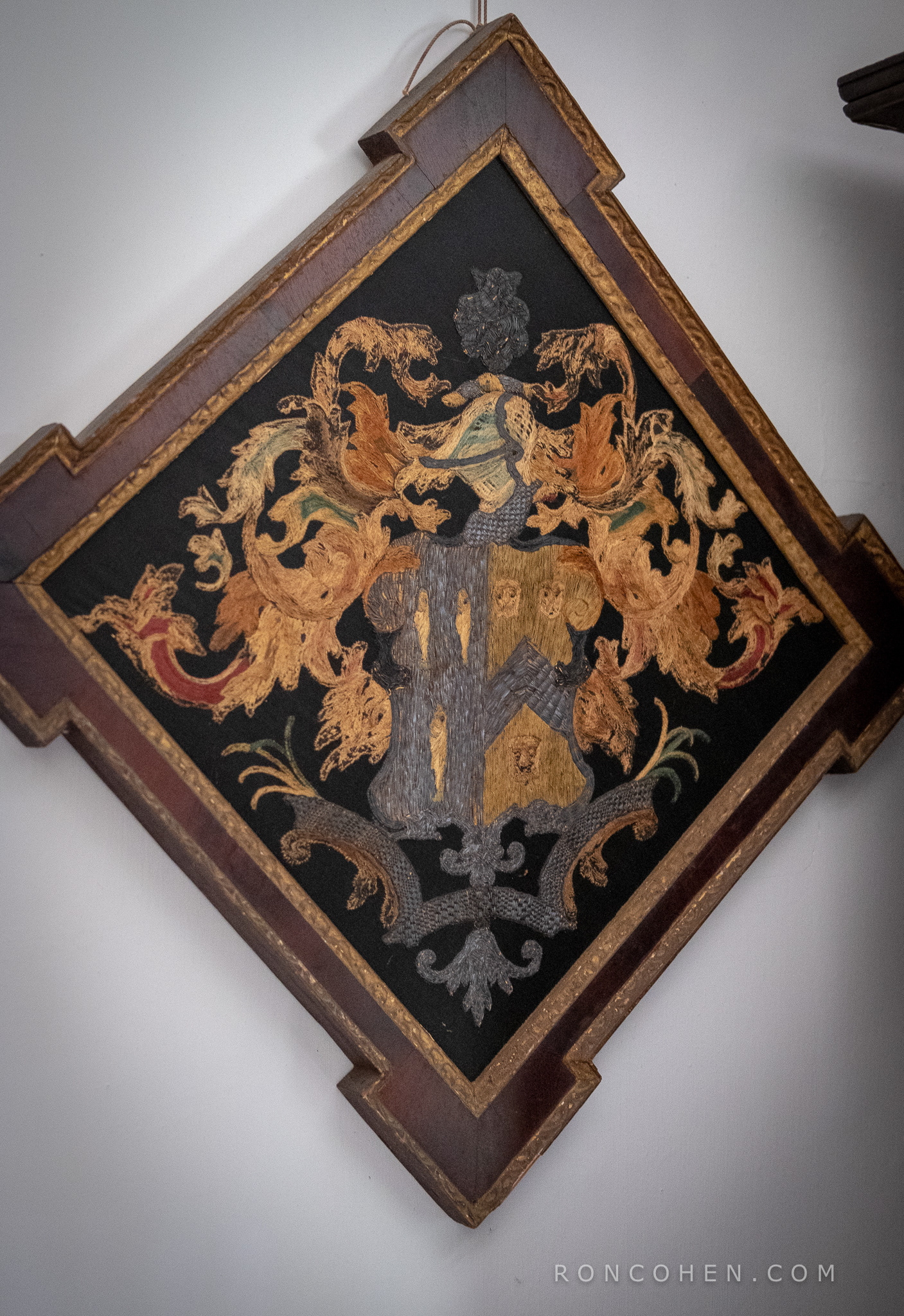
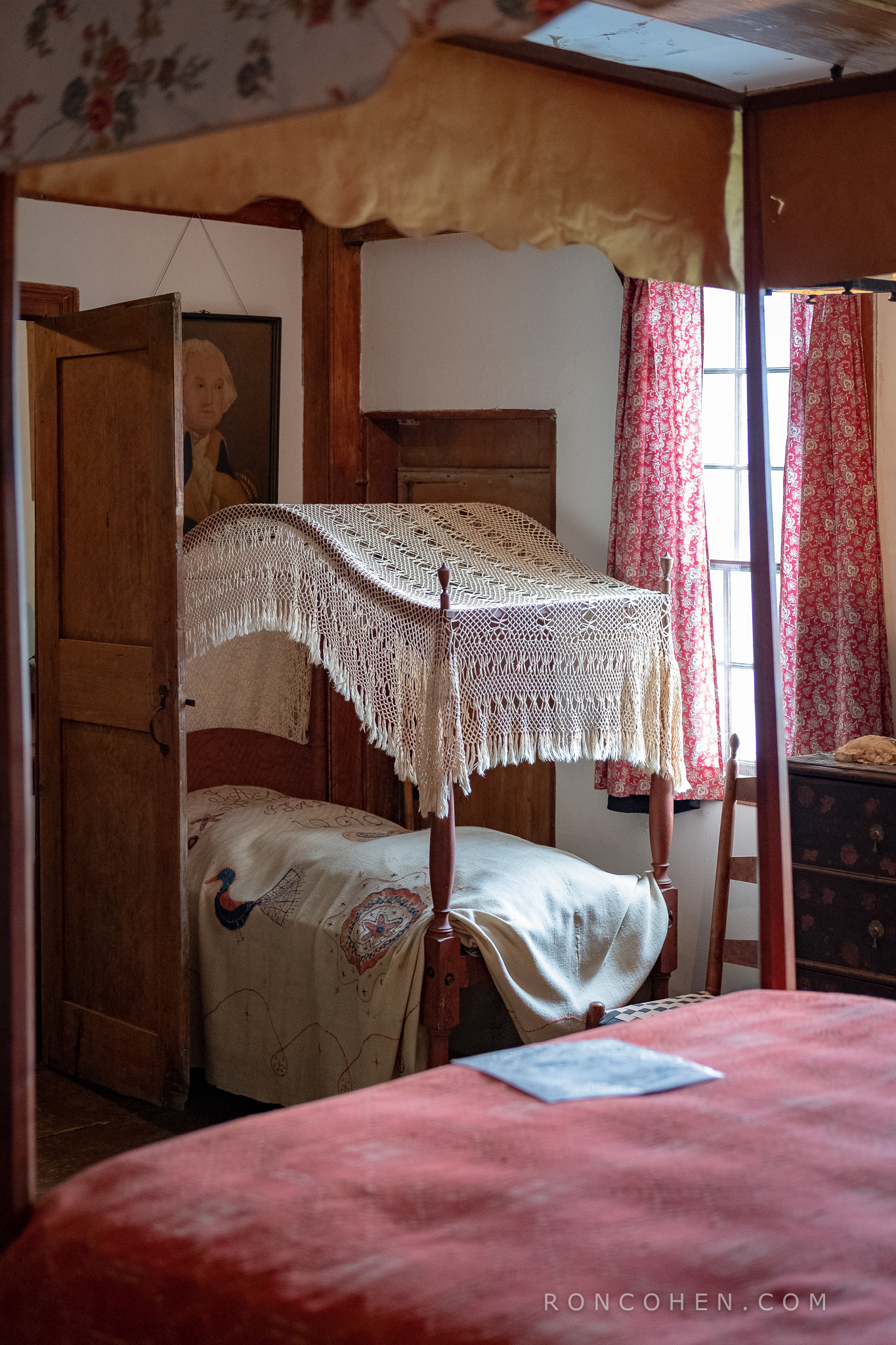
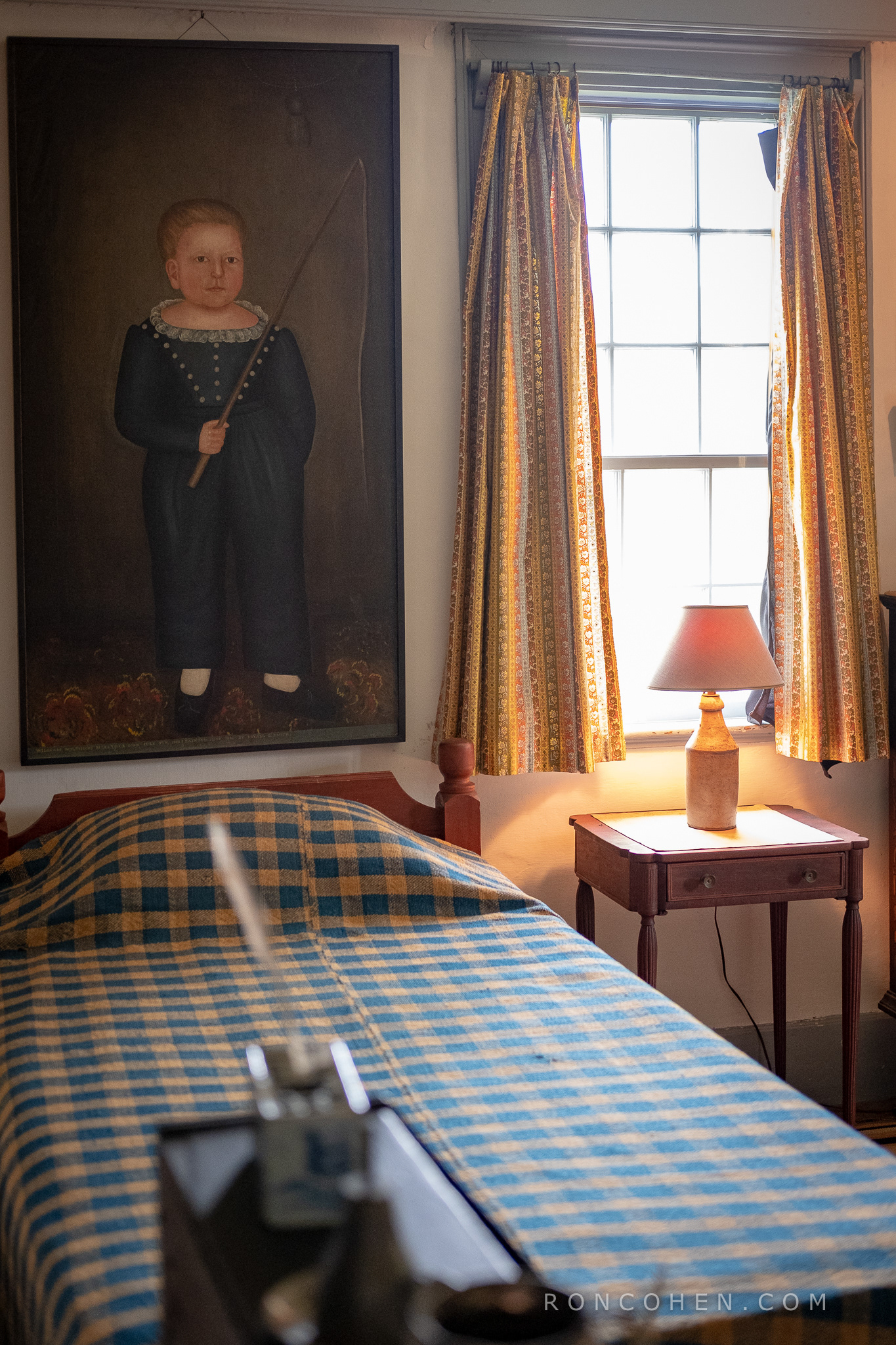
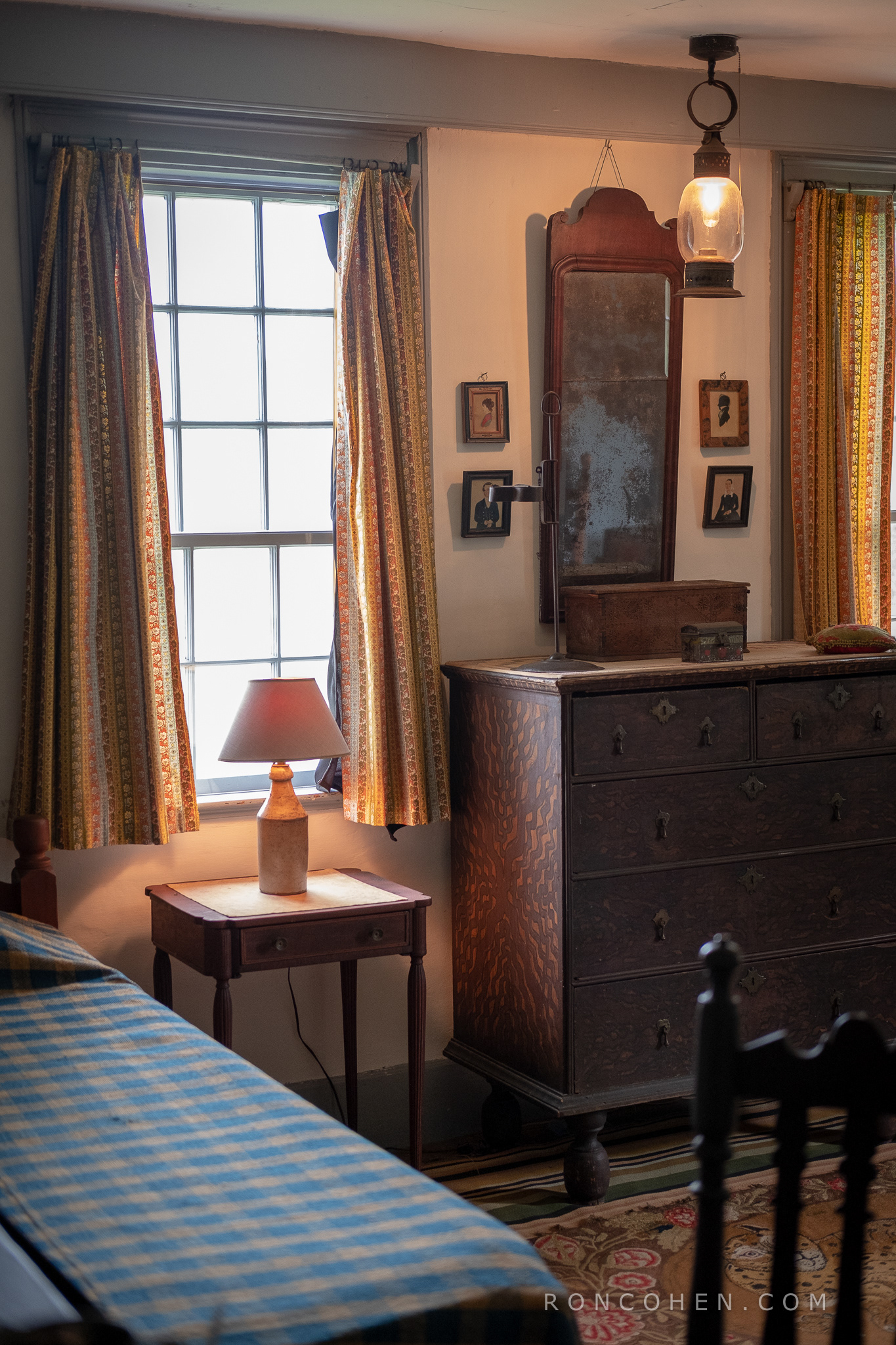
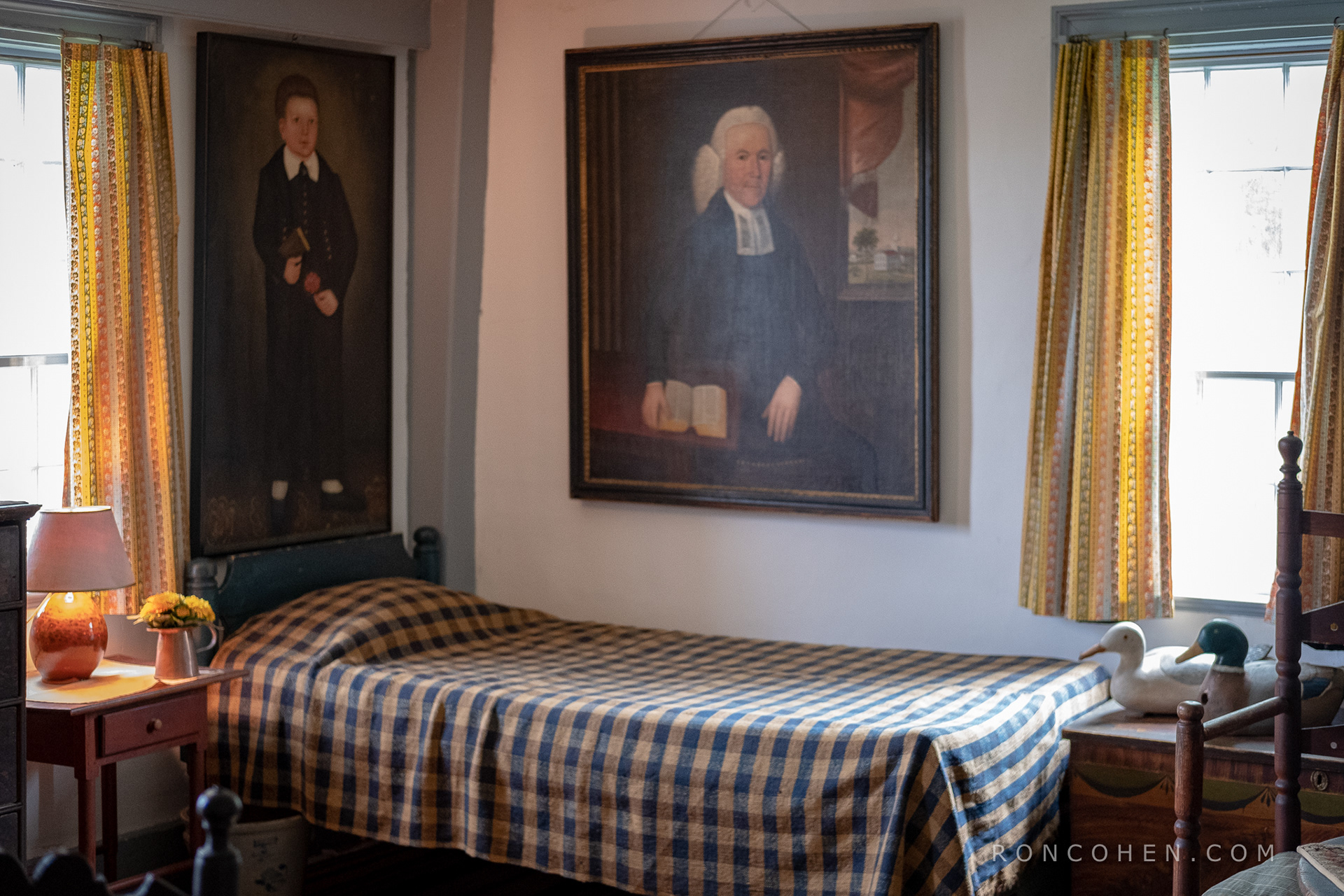
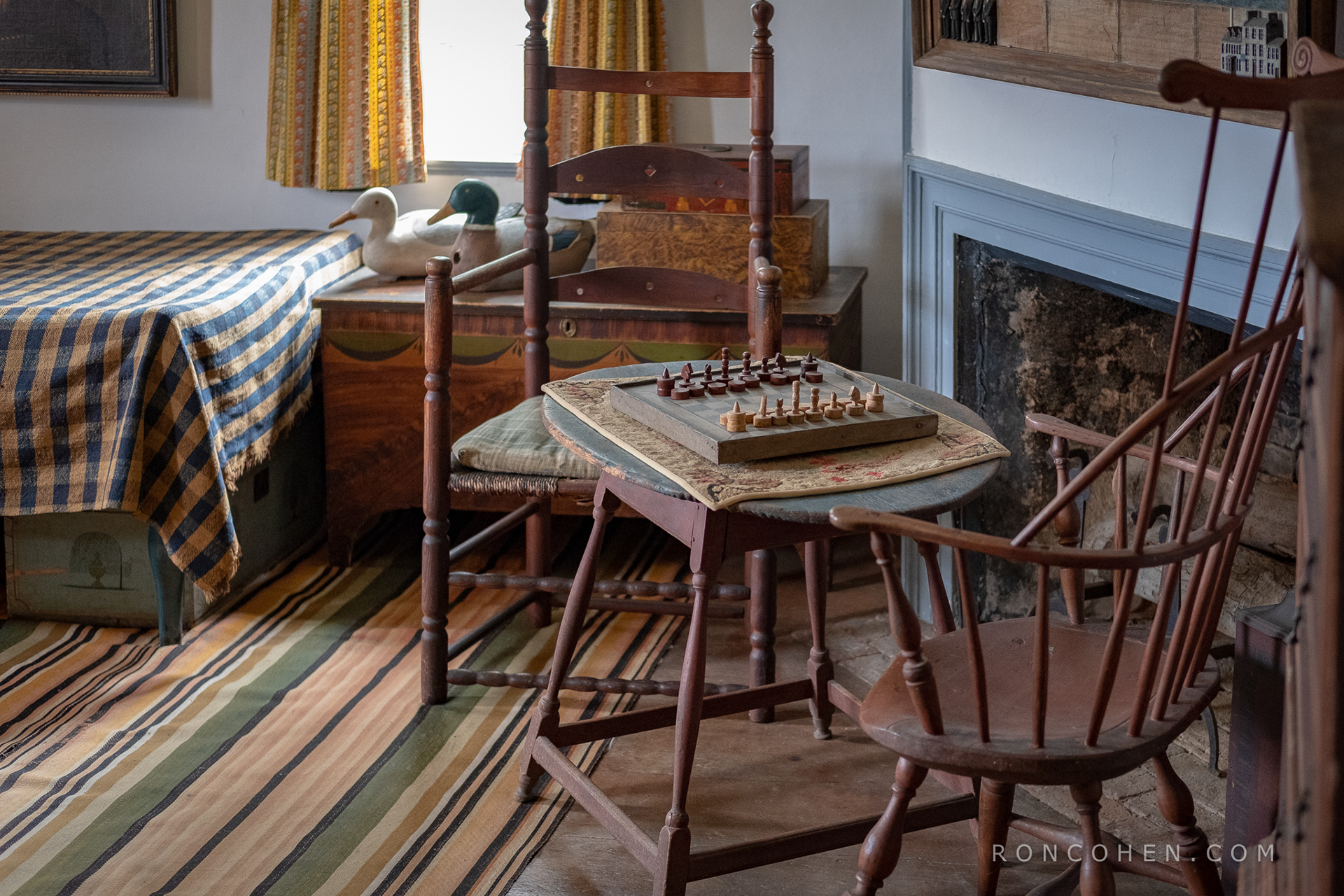
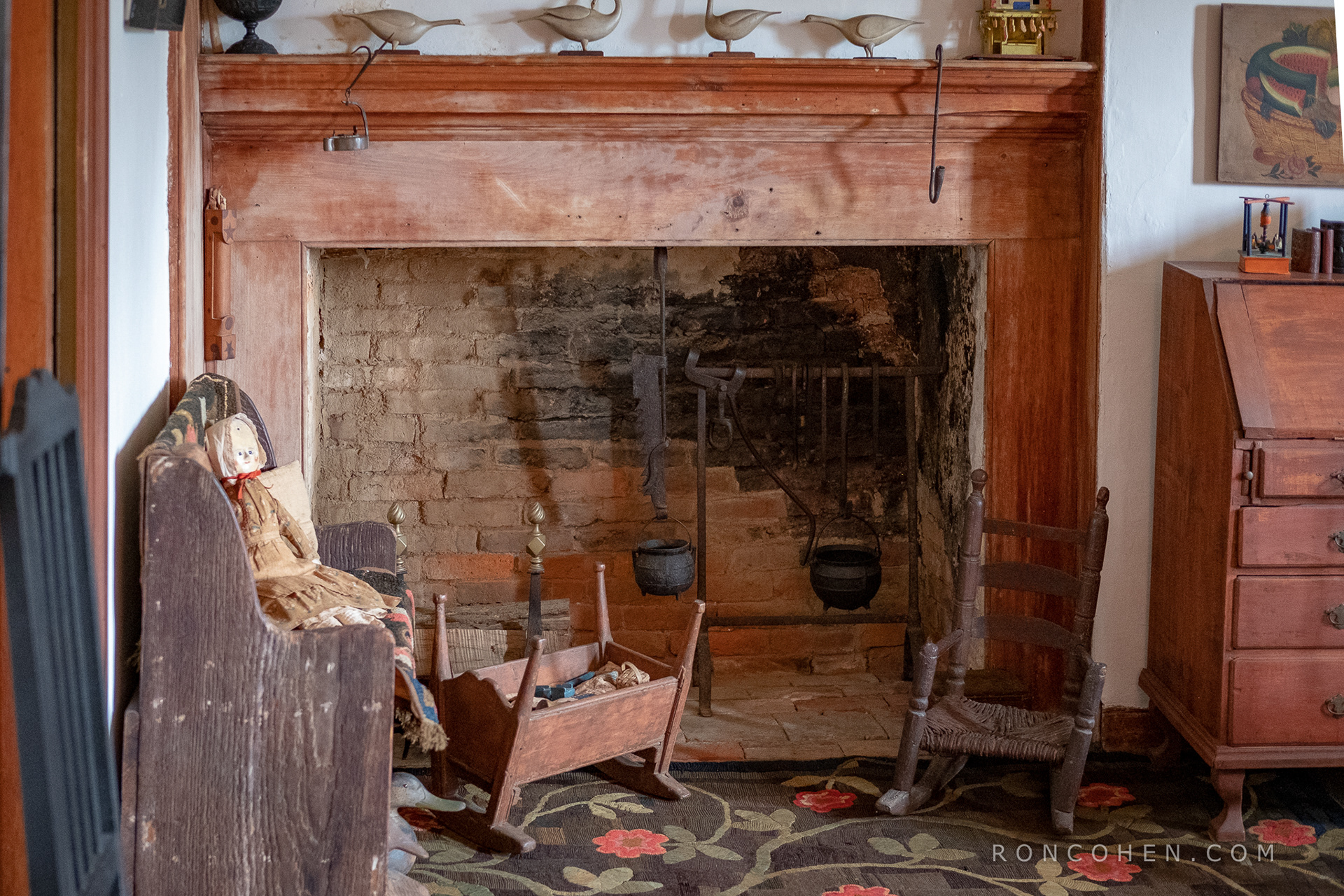


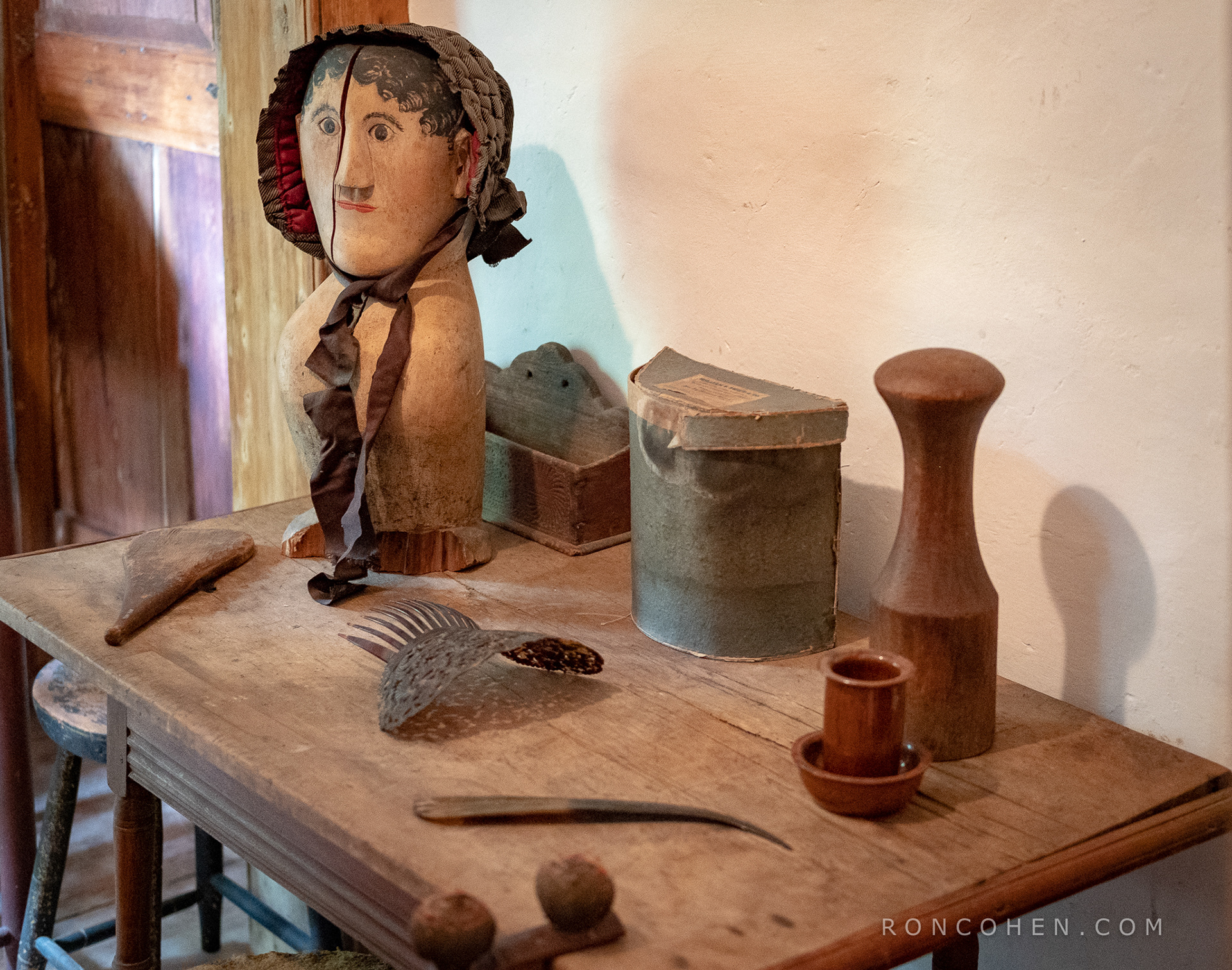
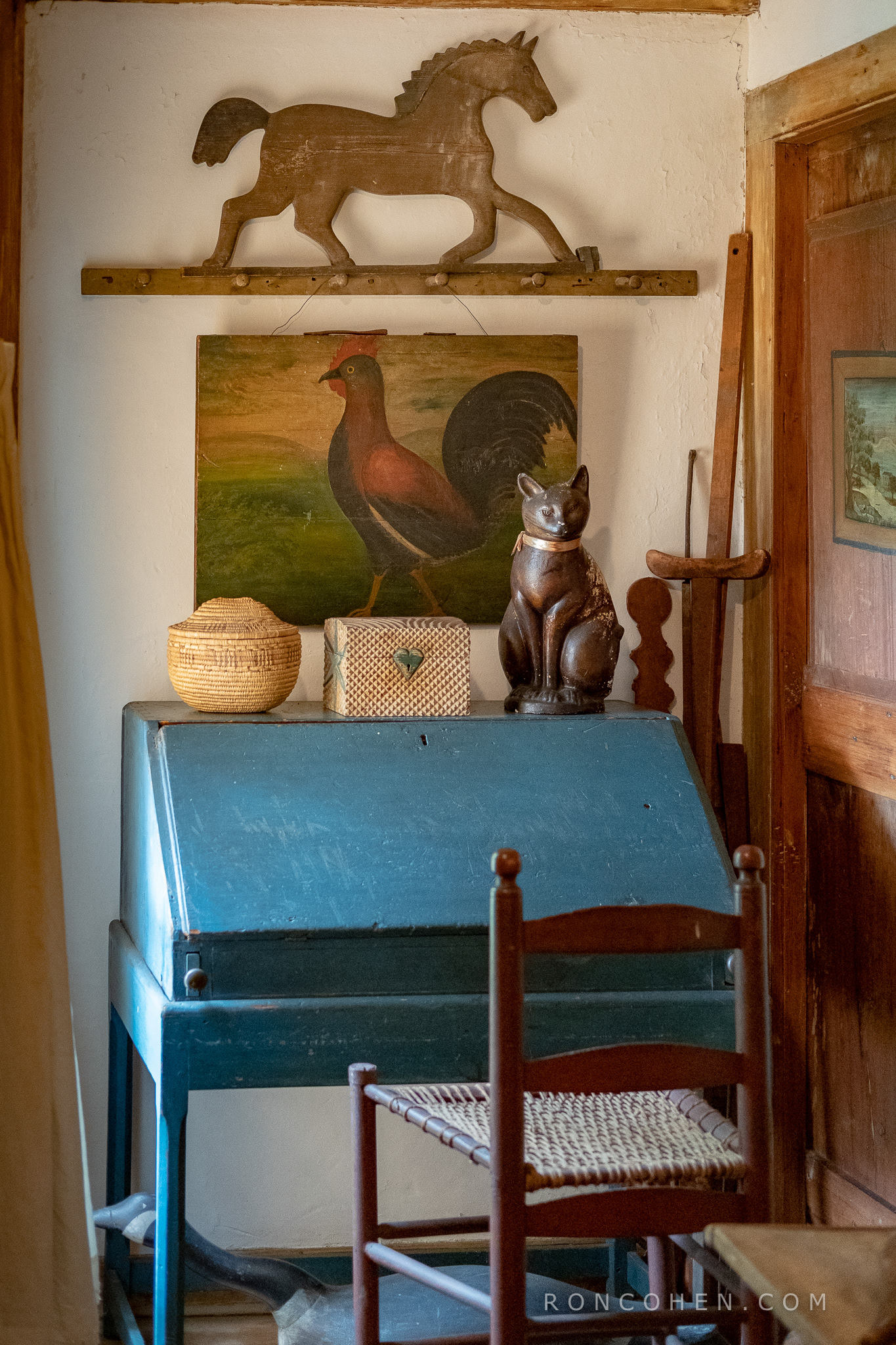
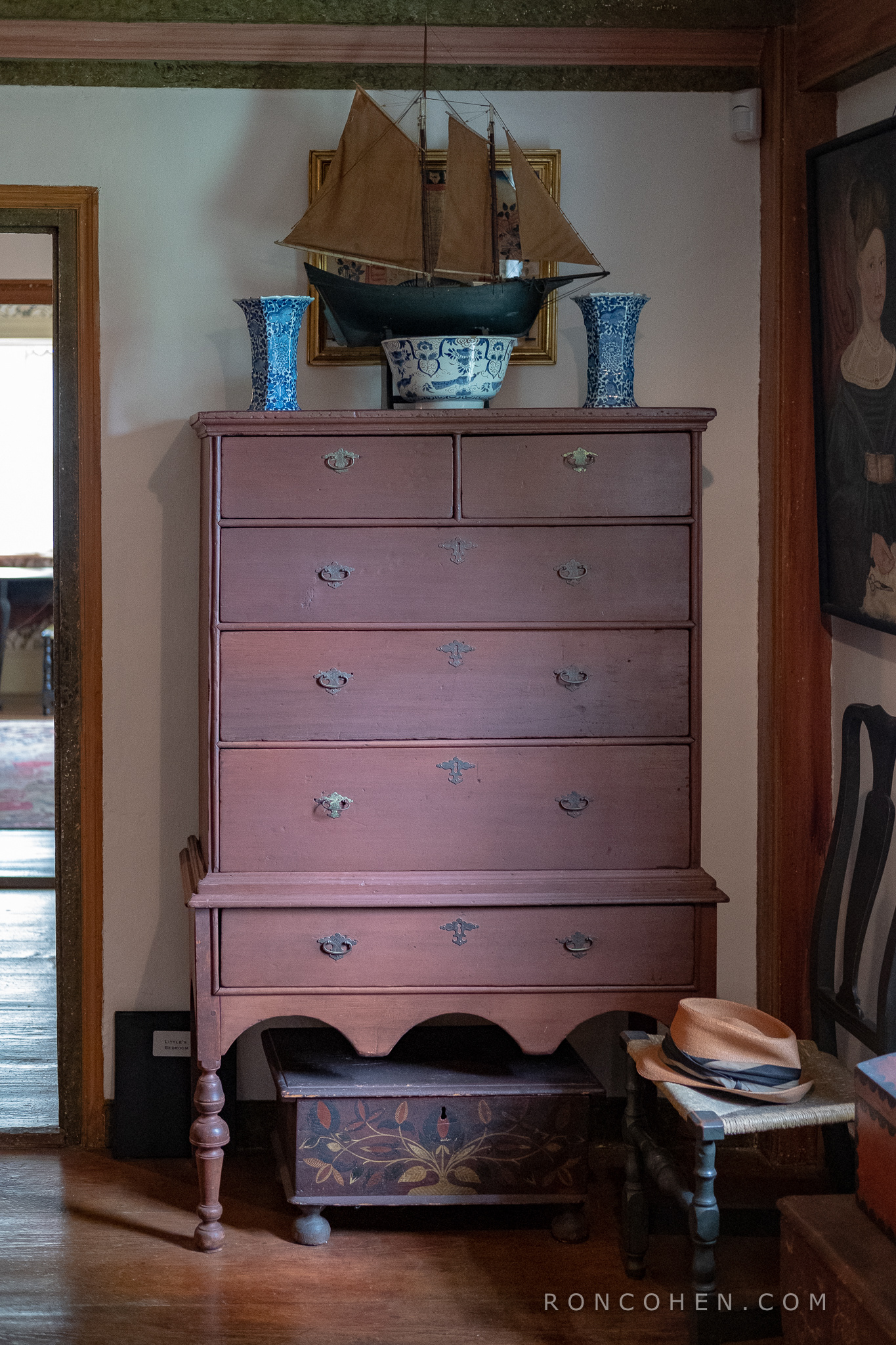
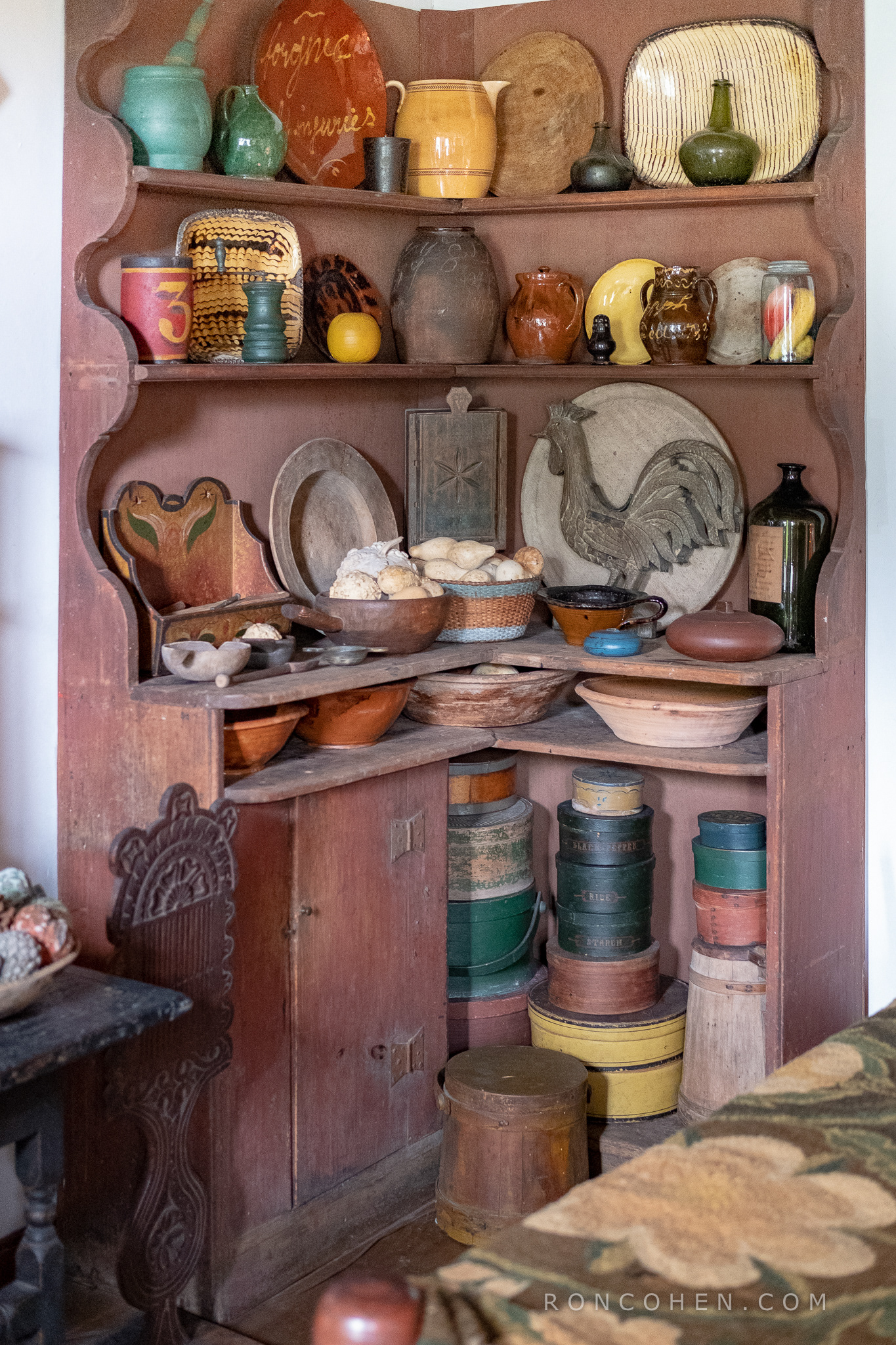
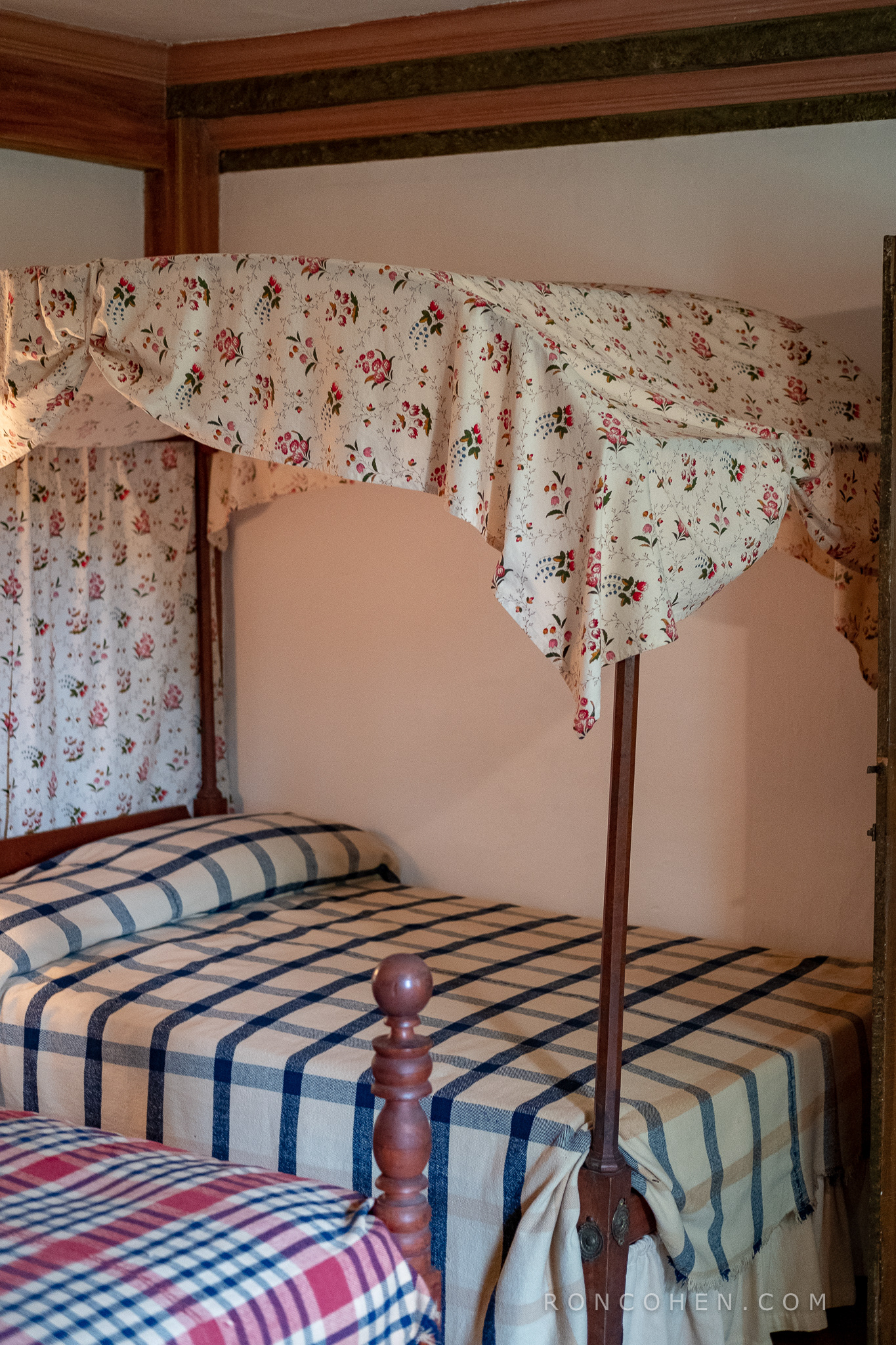
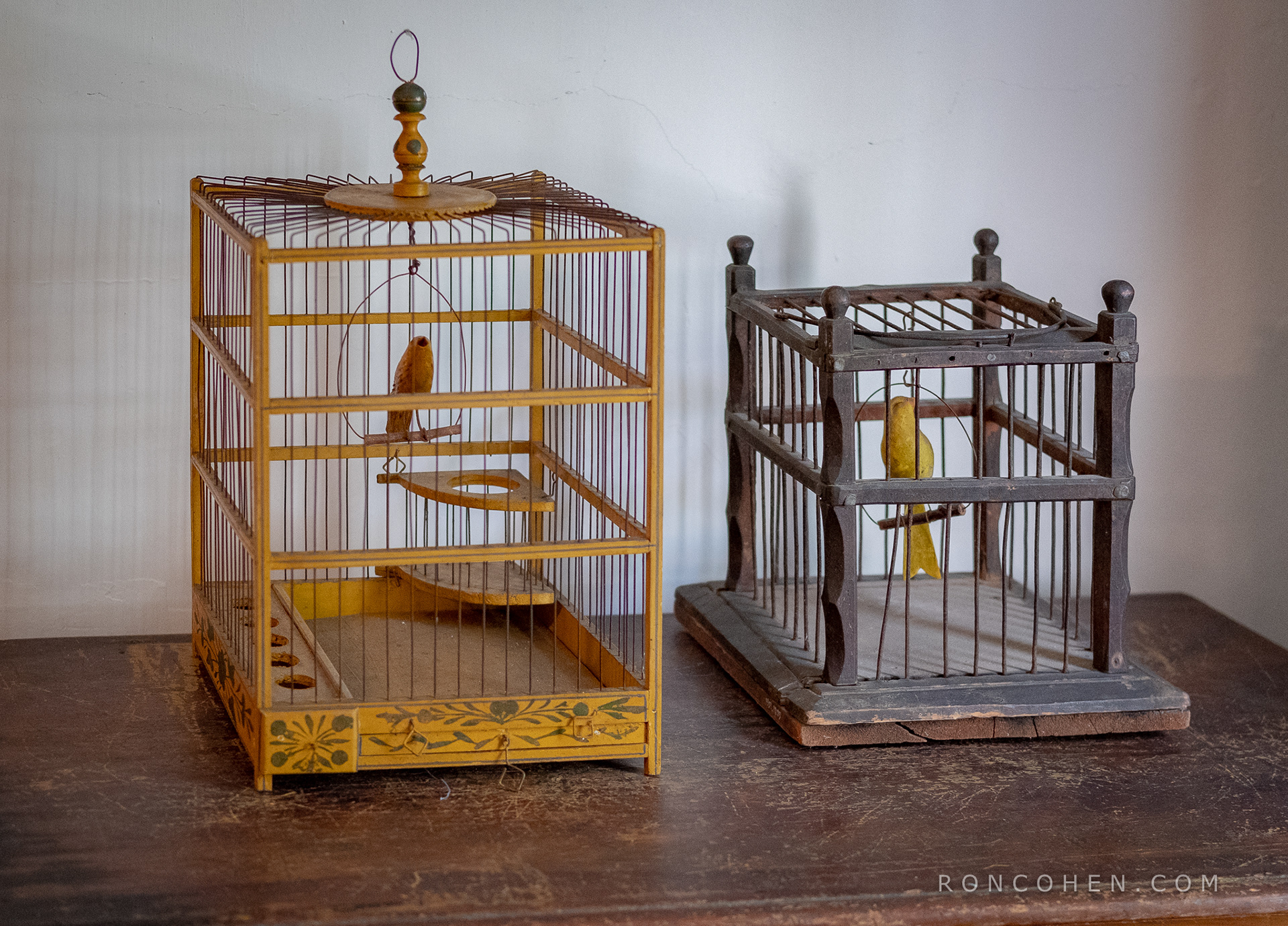
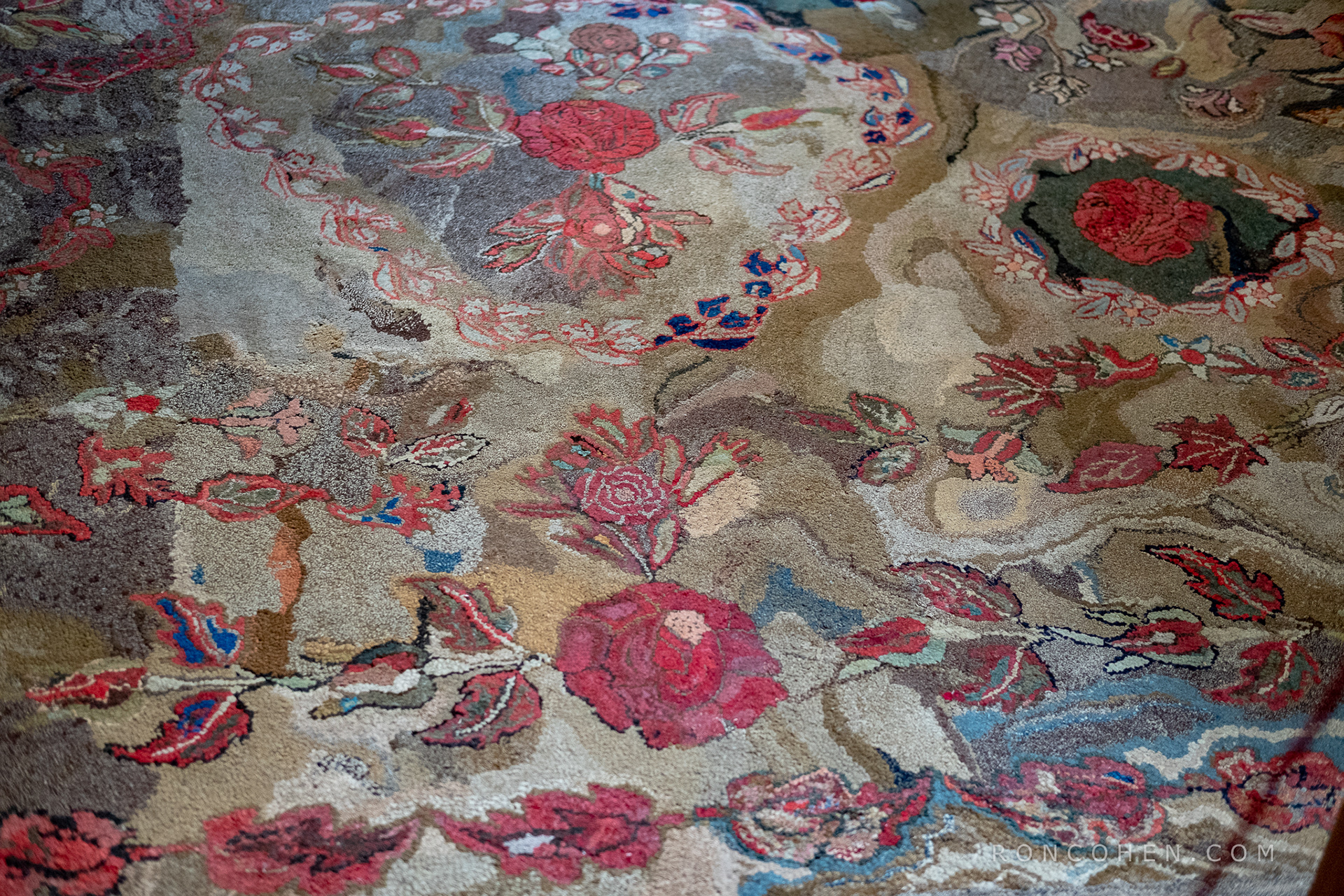

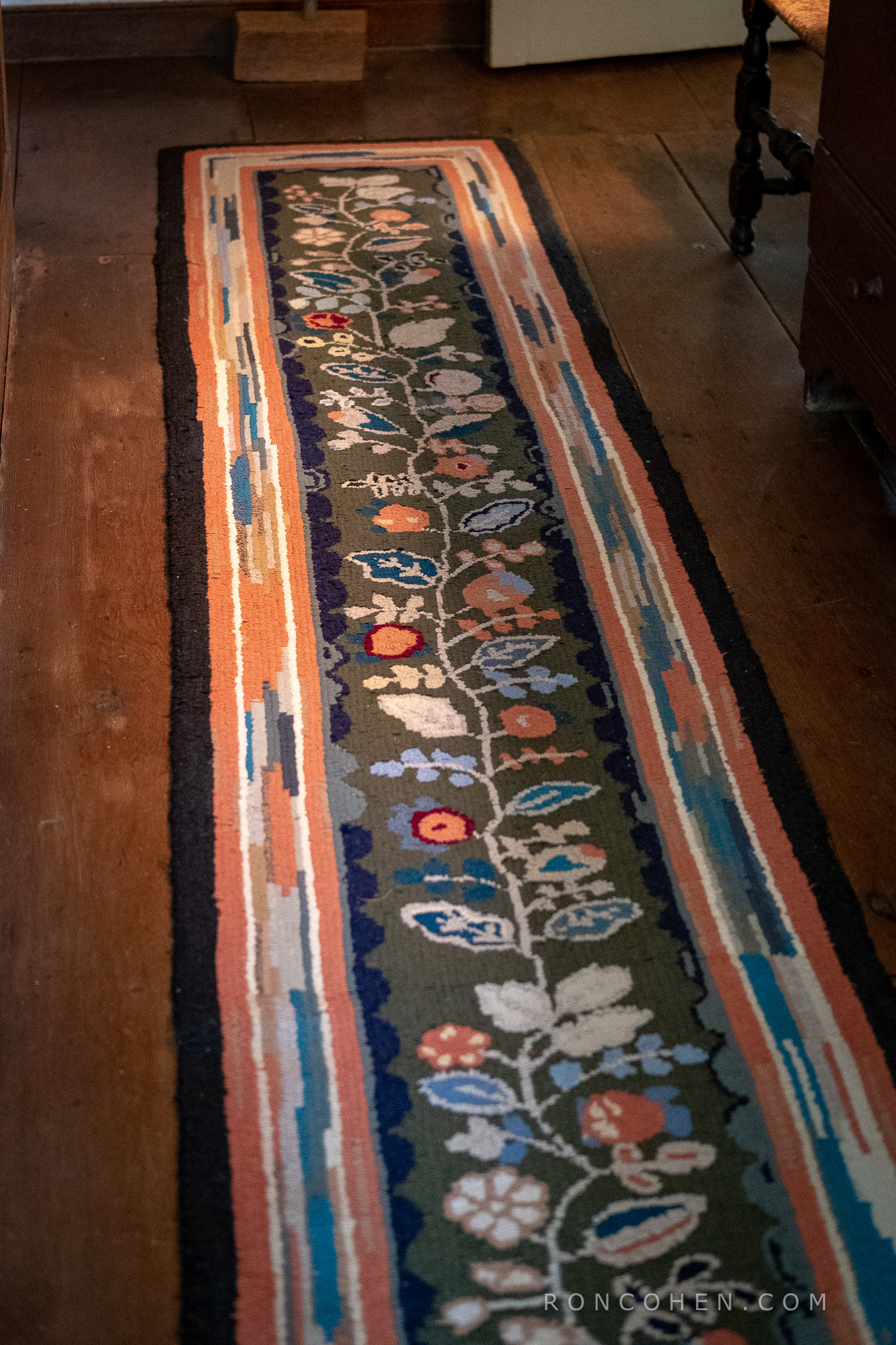
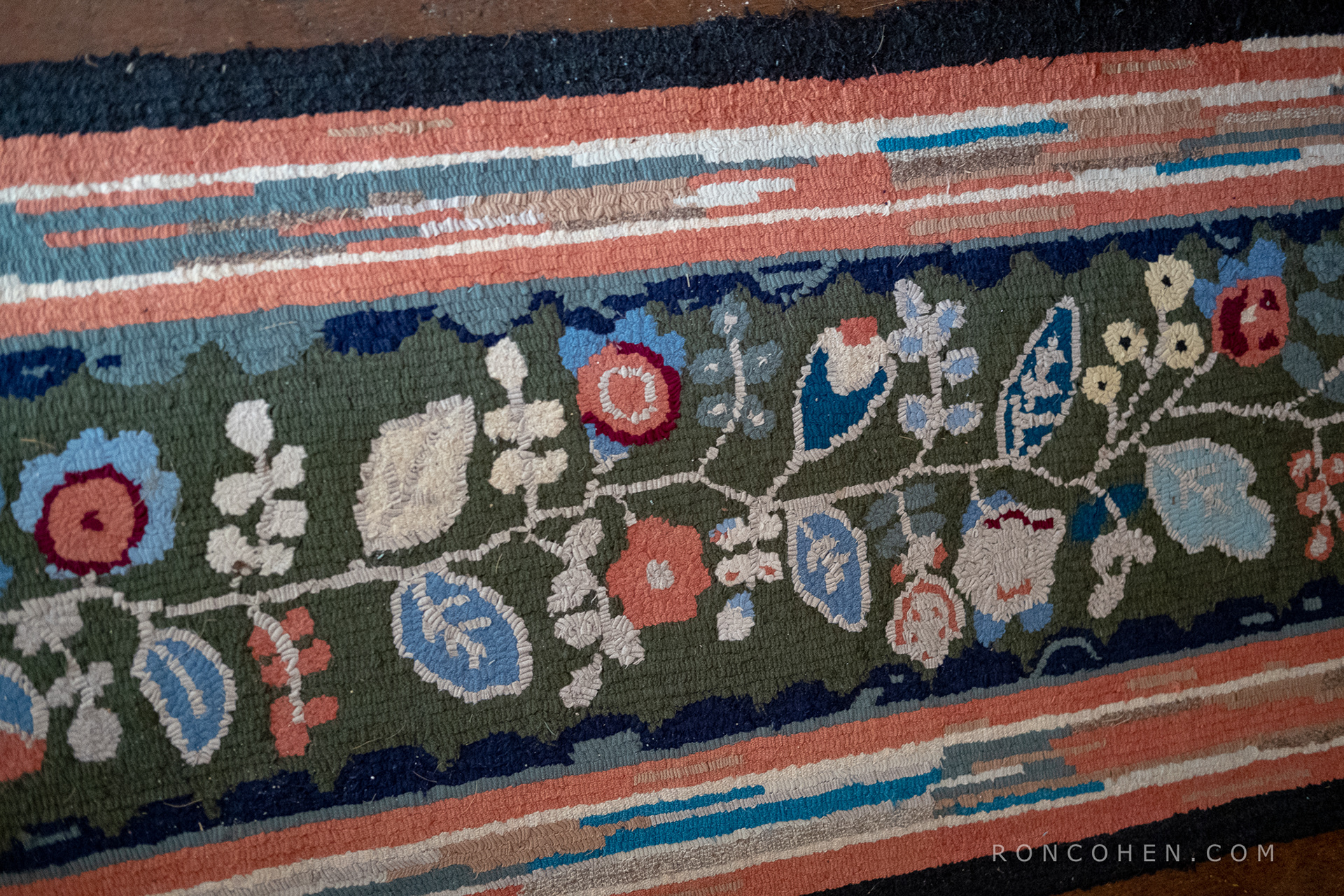
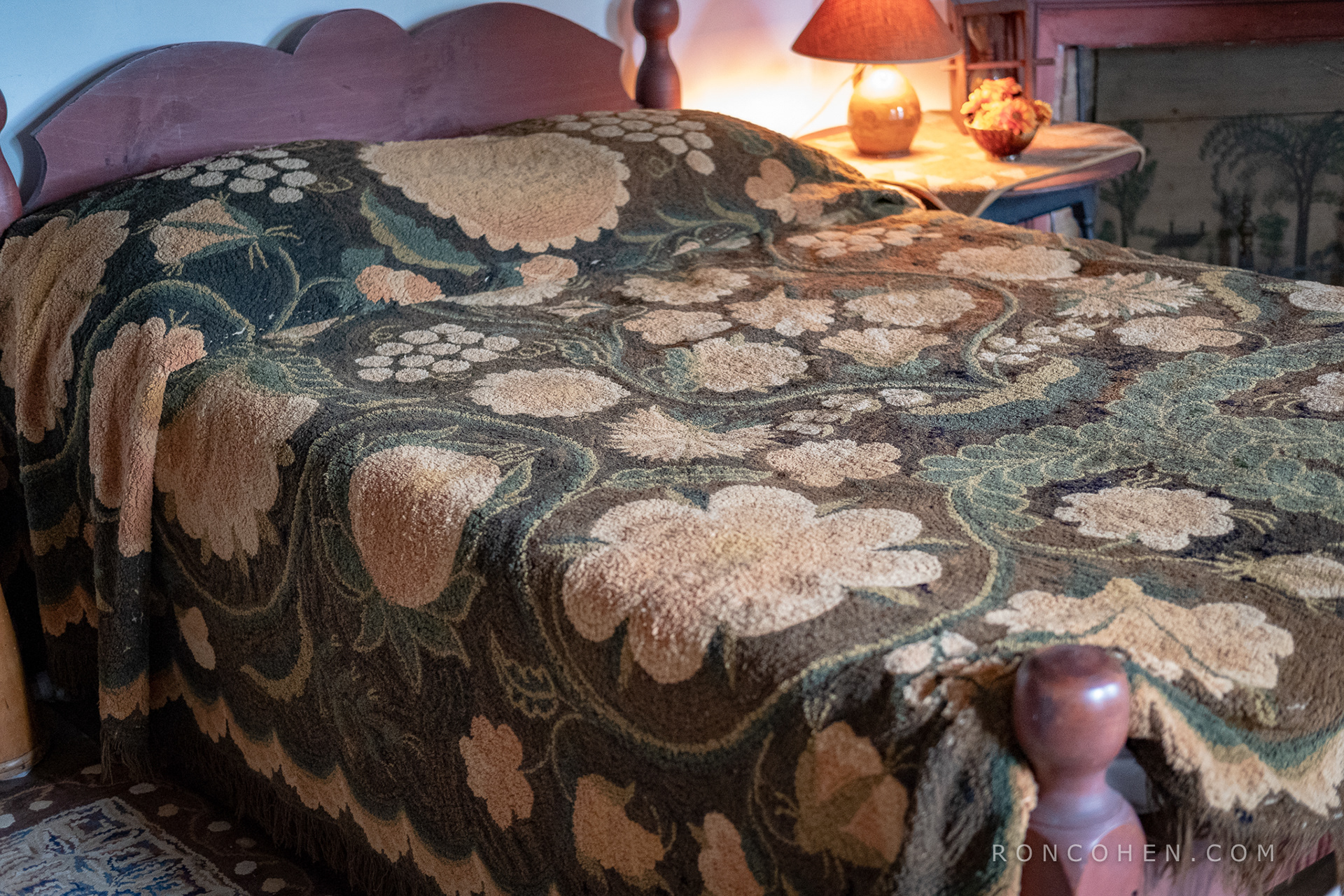



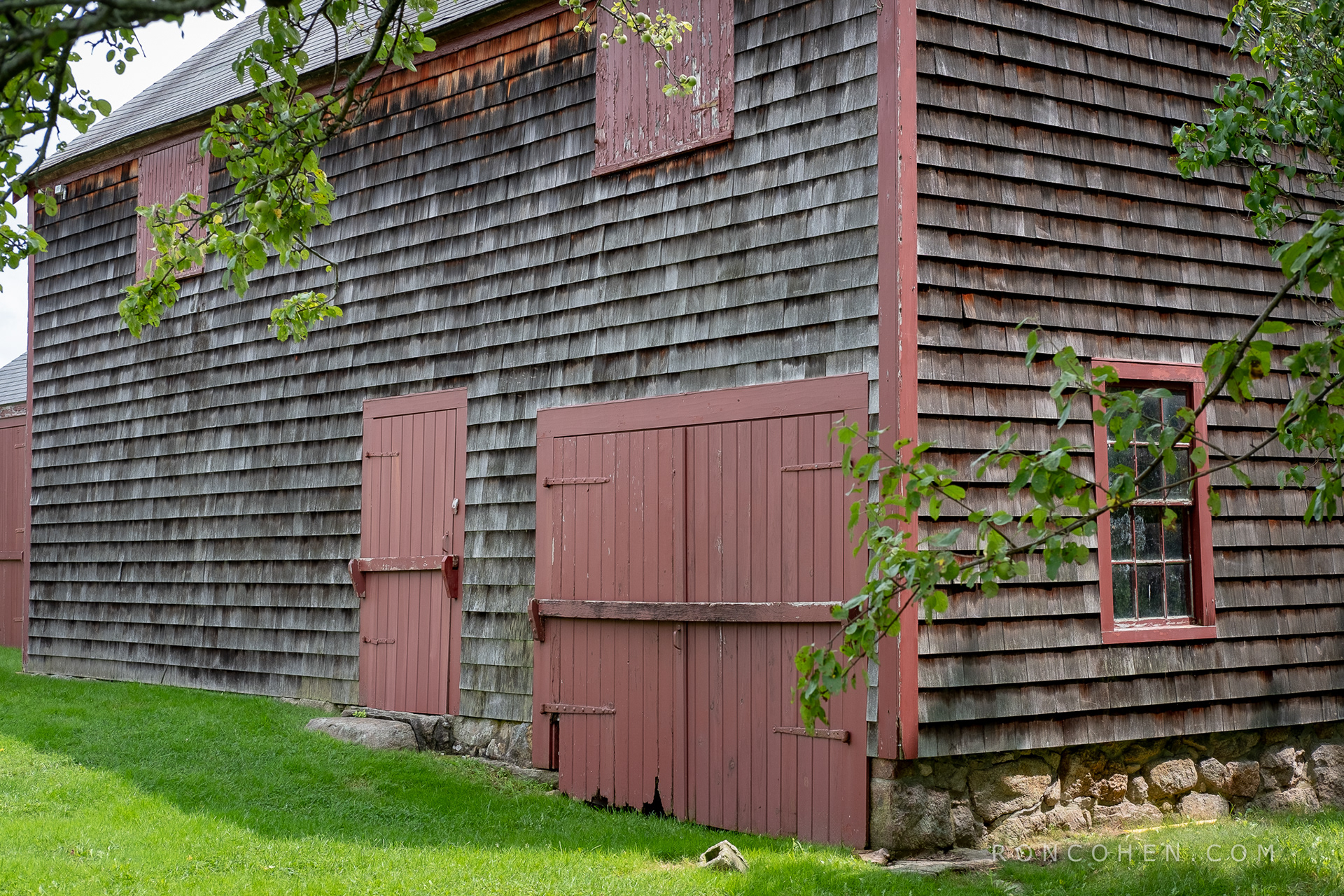
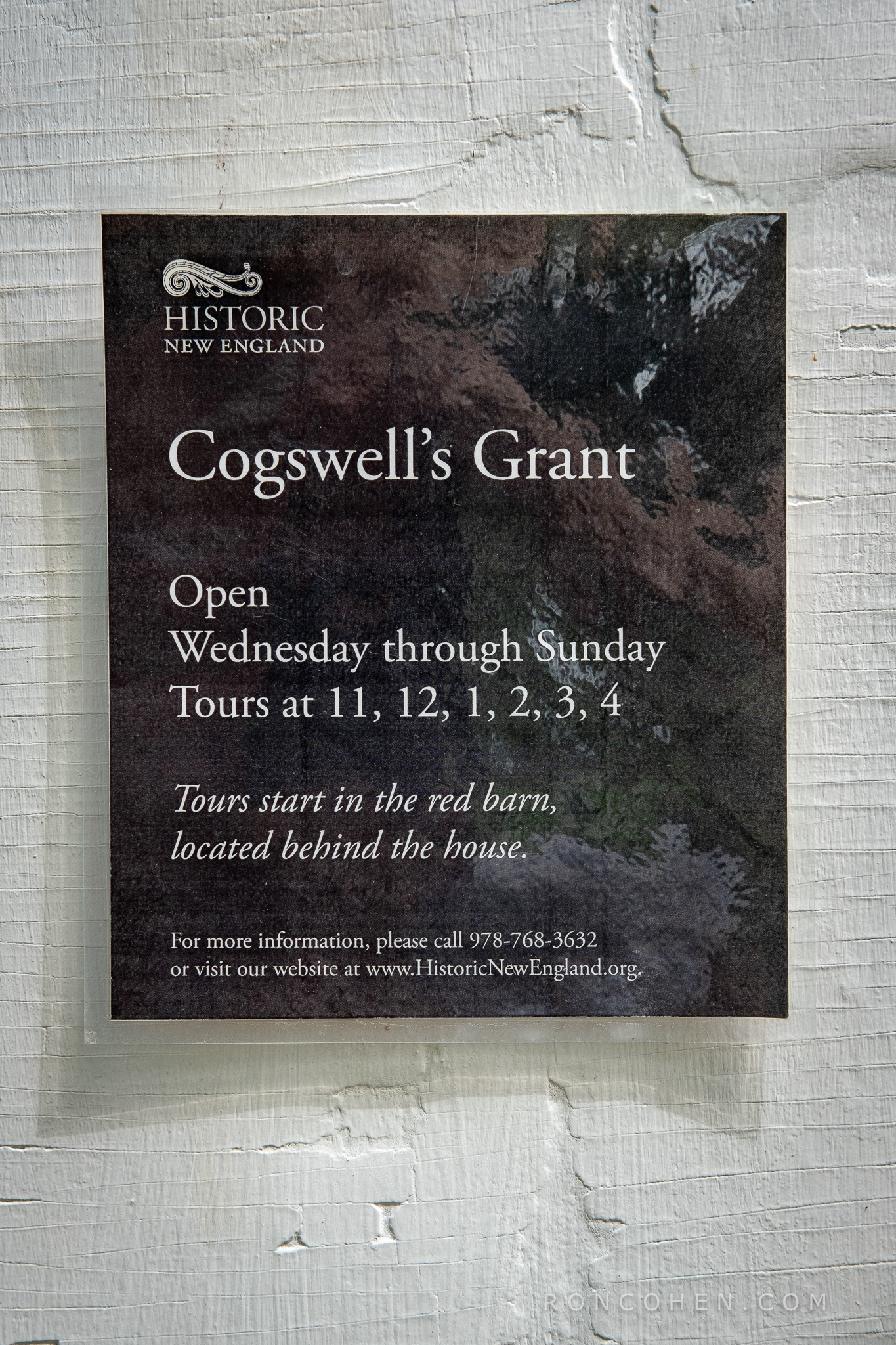
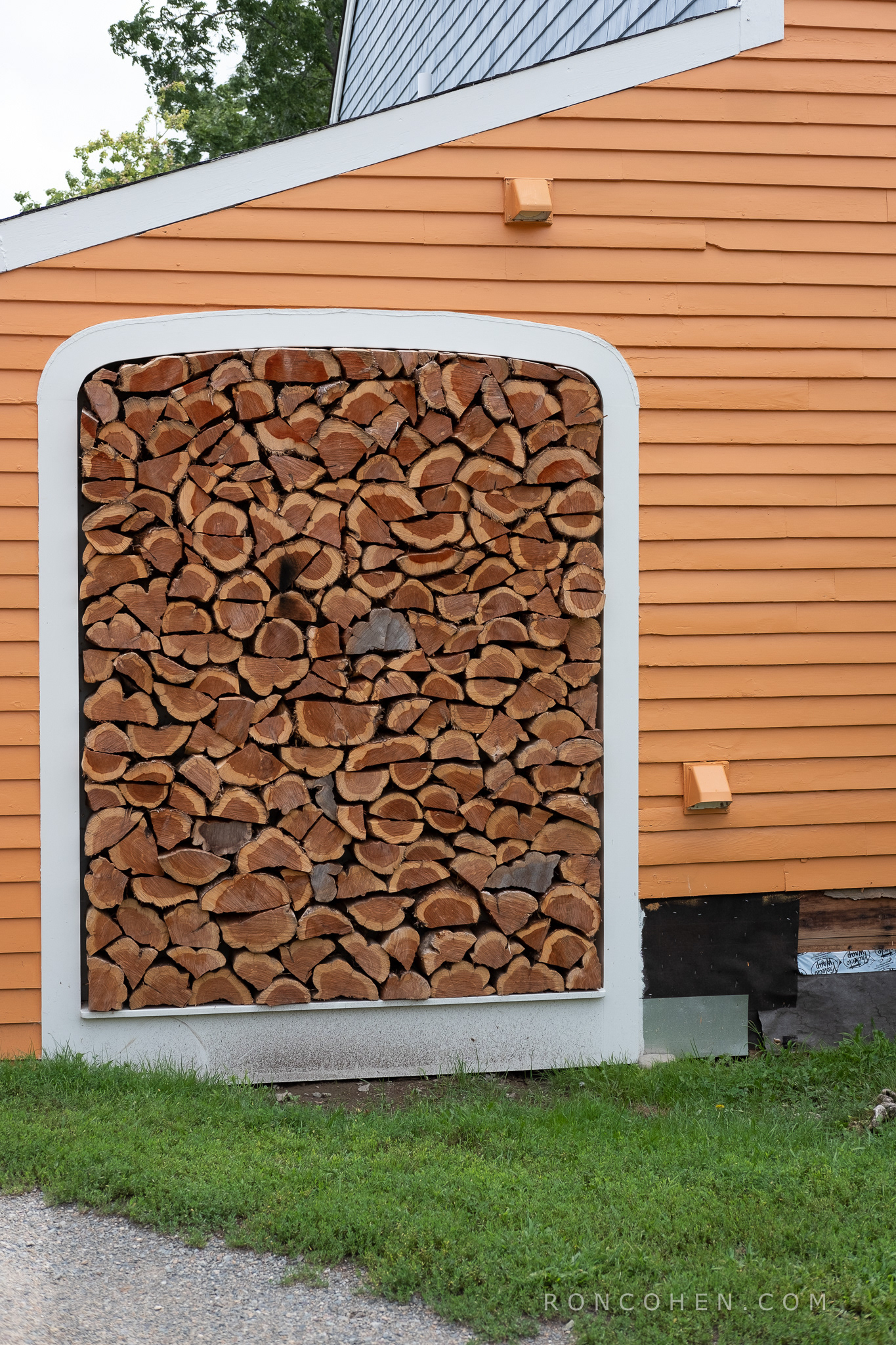


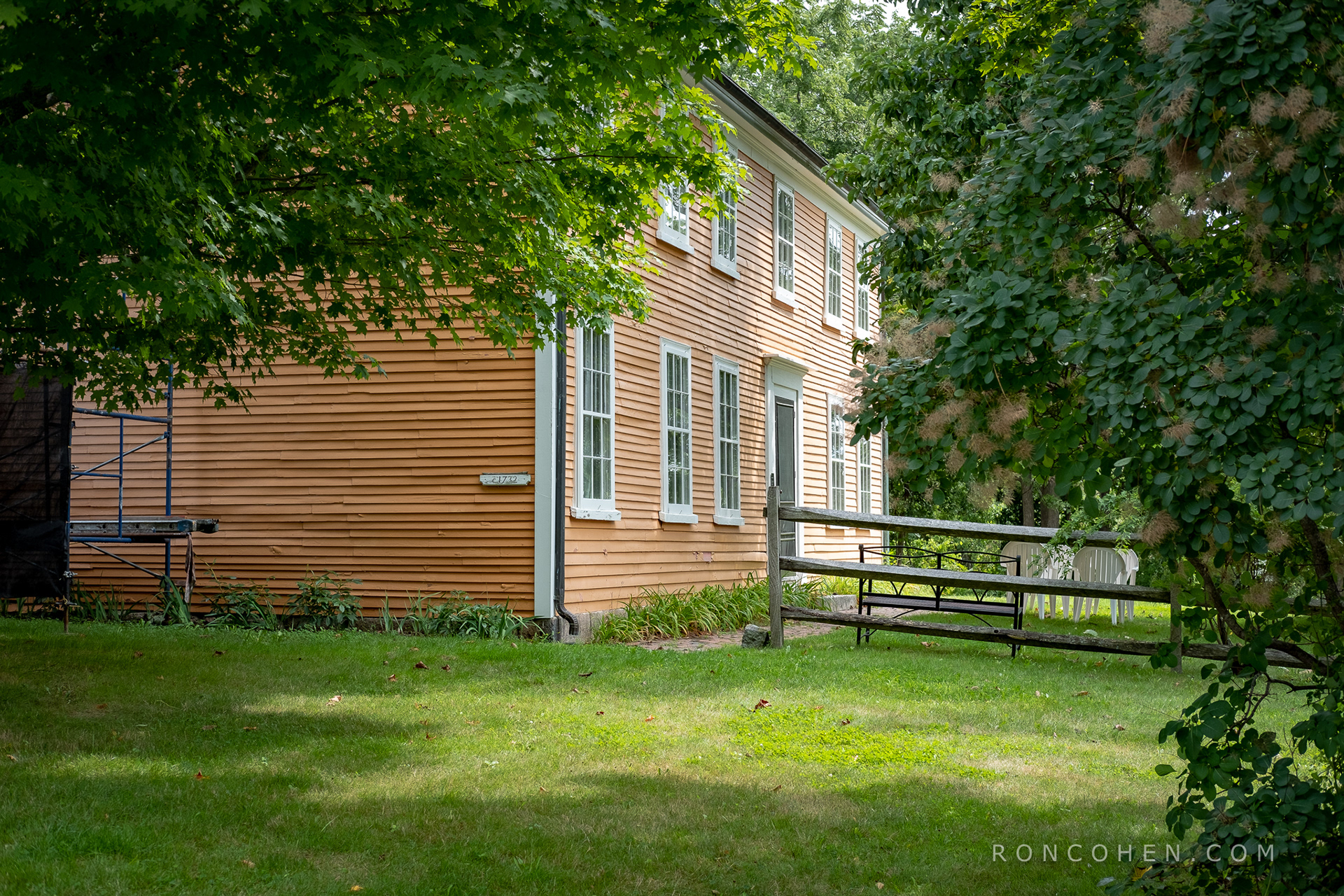
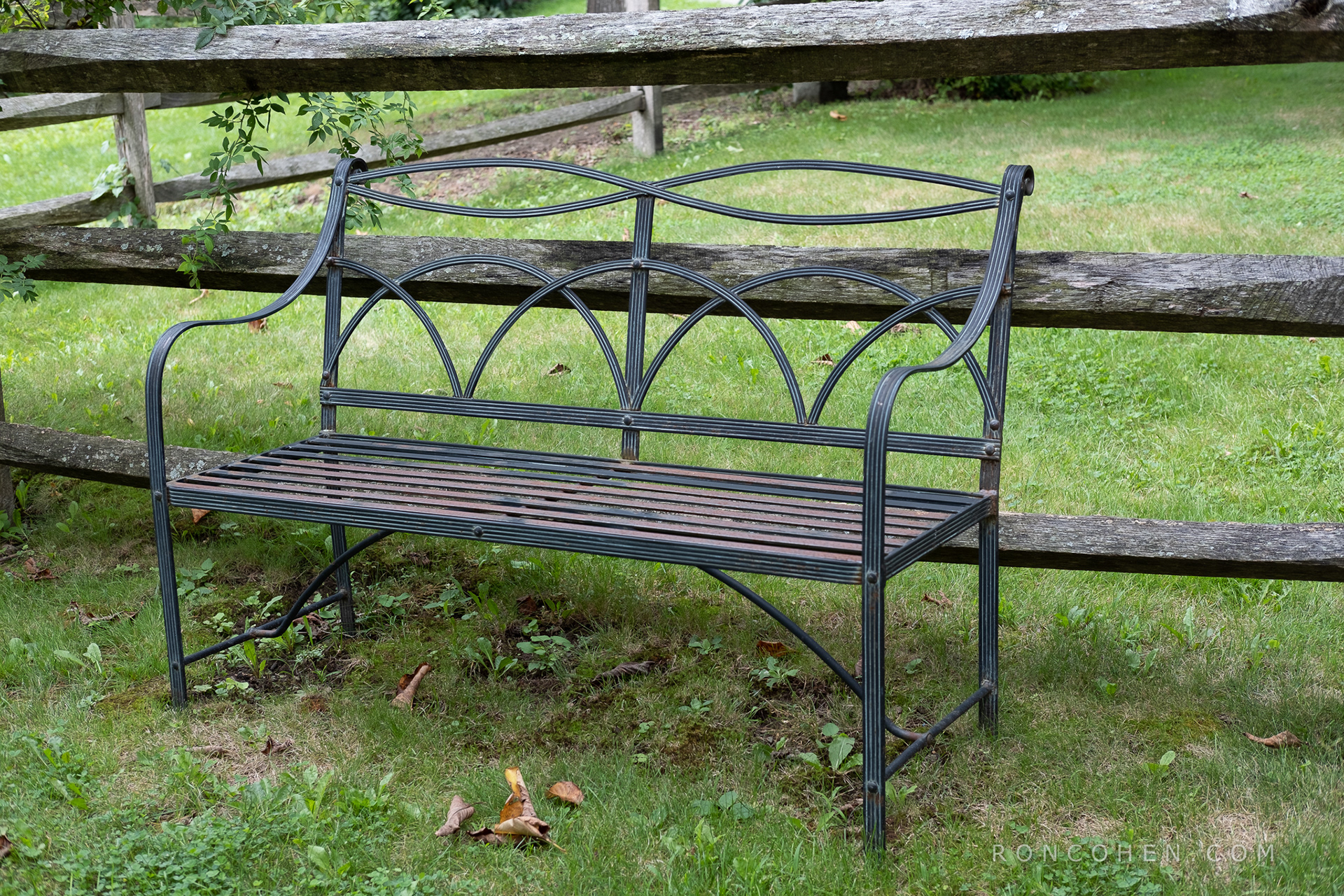

I often look for a theme to tie a group of photographs together. Historic house museums I find confusing in this respect, for they always present multiple themes, layered one upon another, which I find difficult to separate—difficult not only in the usual intellectual way, but also in terms of my own emotional response to what I’m seeing and photographing.
Such layered themes may include the history of the property, from the original owner down to the present; the preserved house, its style and what it tells us about life at the time it was built; the contents of the house which may or may not be original, or faithful to the original; and great historical events associated with the house, as for example the American Revolution with the Old Manse in Concord, Massachusetts.
Cogswell’s Grant is a vivid example of this layering. Not only is it famous in its own right as a 165-acre working farm in continuous operation since 1636, with its attendant structures, but as the summer home of two famous collectors of American folk art, with which the house is filled, and for which it serves as a museum. The property is now owned and preserved by the nonprofit organization, Historic New England. Here is the introduction from their website:
A mecca for lovers of American folk art, Cogswell’s Grant was the summer home of renowned collectors Bertram K. and Nina Fletcher Little. The colonial-era farmhouse is a rich backdrop for their celebrated collection, assembled over nearly sixty years. Though known for their research, the Littles decorated with an eye for visual delight rather than historical accuracy. Their home is rich in atmosphere and full of strong, even quirky character.
The Littles purchased this 165-acre property overlooking the Essex River in 1937 and carefully restored the 1728 farmhouse. Cogswell’s Grant was the perfect setting for the Littles’ antiques, but was also important as a working farm and family retreat where they relaxed and entertained. The rooms overflow with folk art portraits, painted furniture, redware, hooked rugs, weathervanes, and decoys. It is one of the only places where you can visit such a collection in the home for which it was assembled.
The Historic New England website goes on to relate the entire story of the property, period by period. I present the first period here. For the rest, history buffs can go to this web page and scroll down:
In 1636 the following entry appears in the Grants Book of the Town of Ipswich: “Granted to Mr. John Cogswell 300 acres of land at the further Chebokoe…”
John Cogswell (1592-1669) was born in Westbury Leigh, Wiltshire, England, and embarked for New England in 1635 with his wife and eight children. Their ship, the Angel Gabriel, was wrecked at Pemaquid Point, Maine, and though the family survived, they lost more than £5000 worth of property, including cattle, furniture, and money. After traveling south, Cogswell established a farm on the land granted to him in the part of Ipswich bounded by the Chebacco (or “Chebokoe”) River, which is now the town of Essex.
Cogswell referred to this property in documents as “Westberry Lee,” naming it after his birthplace in England, and a mortgage record for 1641 indicates a house and other buildings on the property. The seventeenth-century buildings do not survive, but archaeological evidence has revealed that a structure from that period had lain perpendicular to the existing 1728 house. In 1651 John Cogswell began to divide his property among his sons, deeding sixty acres each to William and John Jr. John Jr. immediately sold his acreage to William, and by 1657, John Sr. had sold the remaining 180 acres to William as well.
The Cogswell story has yet another thematic layer, one most remarkable. It is the long list of famous people who were descended from John Cogswell and his wife Elizabeth Thompson, and their children. As reported by Wikipedia, they include:
Princess Diana (and her children), Oliver Wendell Holmes Sr and Oliver Wendell Holmes Jr, John Adams, John Quincy Adams, Charles Francis Adams Sr, Henry Adams, Brooks Adams, Margaret Mead, Tennessee Williams, Thomas Pynchon, Ralph Waldo Emerson, E A Robinson, Calvin Coolidge, Nathaniel Hawthorne, and Julia Ward Howe
The accompanying photographs are not intended as a catalog (I was in the house for less than hour, after all). They are only impressions, a sampling of the visual delights I found. The book in the photo is a captain's log. The oldest structure on the site appears toward the end, a salt hay barn built in 1719. The trompe-l’œil firewood on the side of the house was first put there by the Littles, and faithfully restored by the present owner—a good example of the tension that can arise between competing "layers" of an historic house museum.
I draw your attention to my other historic projects, and invite you to visit them: The Mill, Winslow, Cogswell, Cemetery, Old Manse, Palmer, Fruitlands, Jeremiah, Marblehead, Harvard. Thank you.
